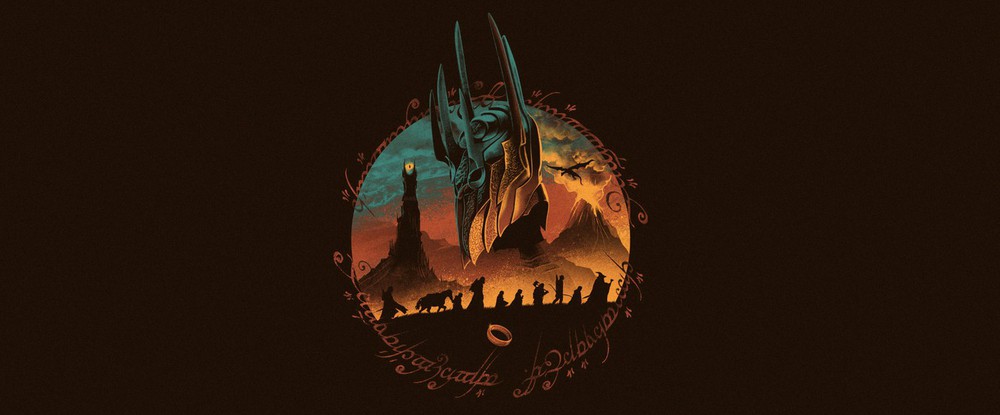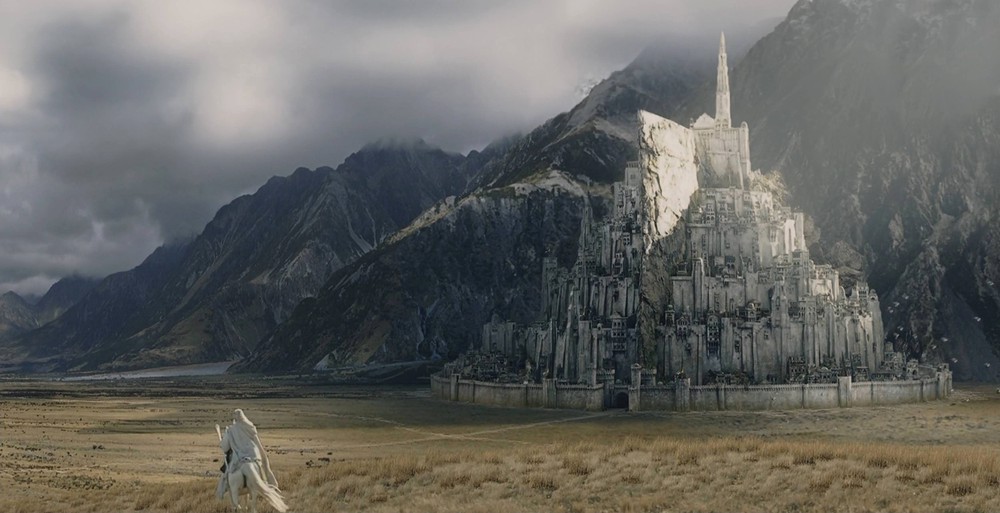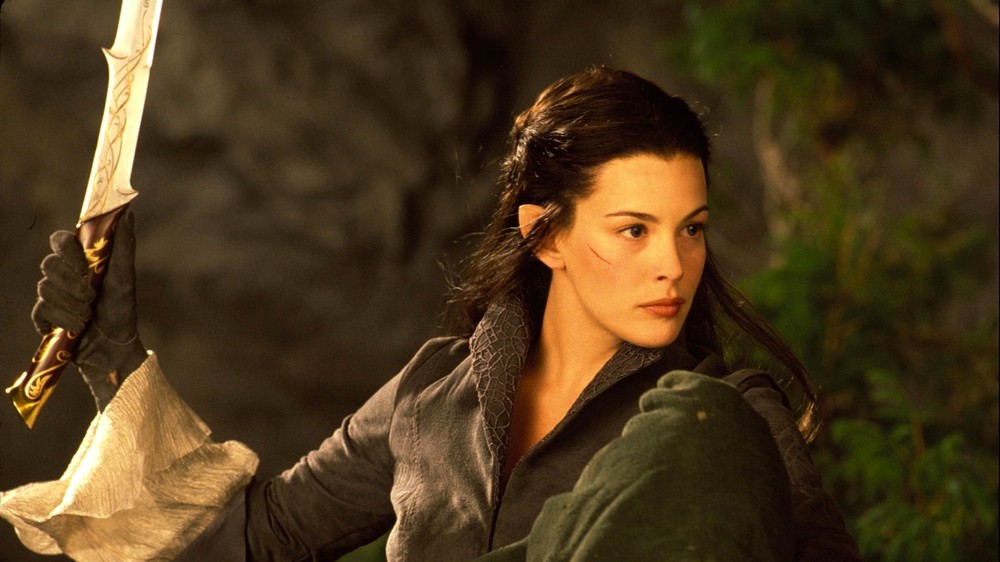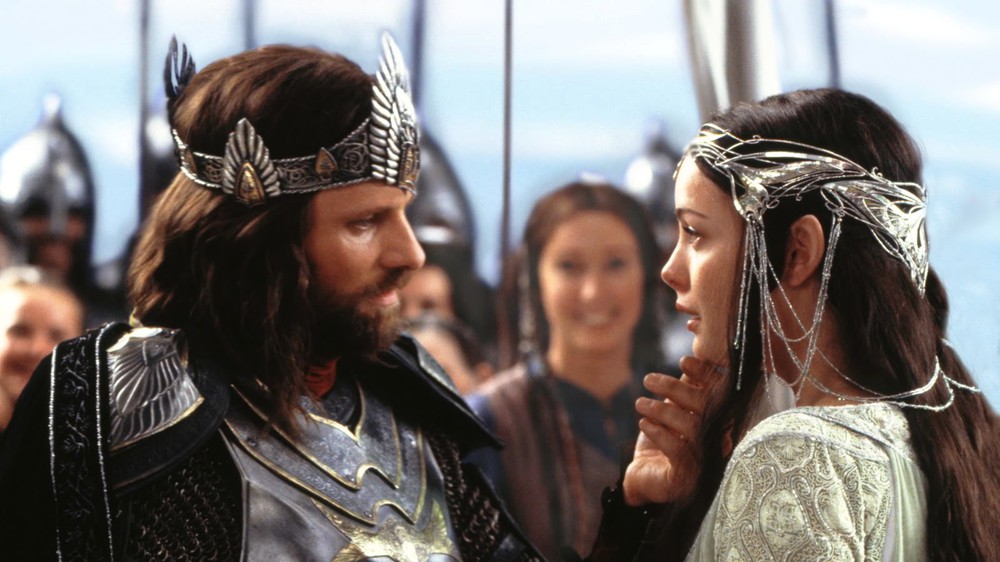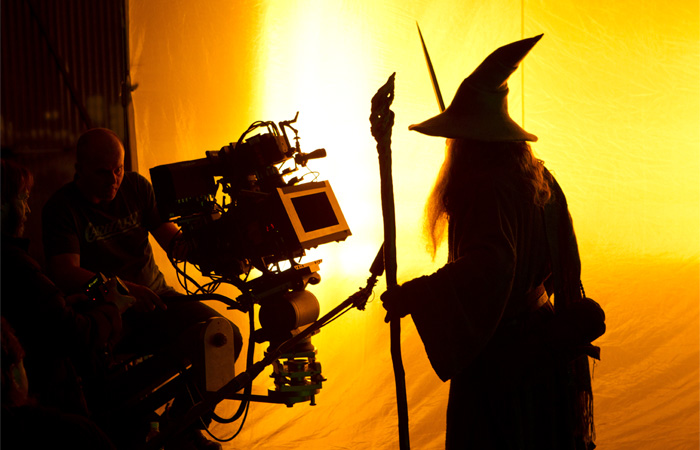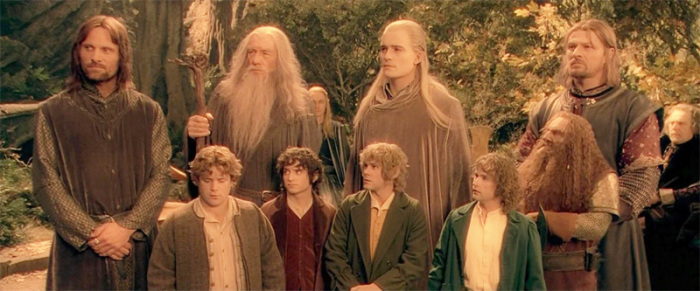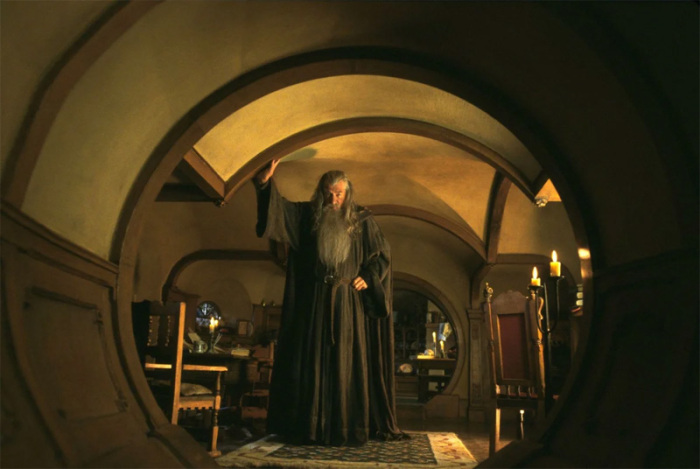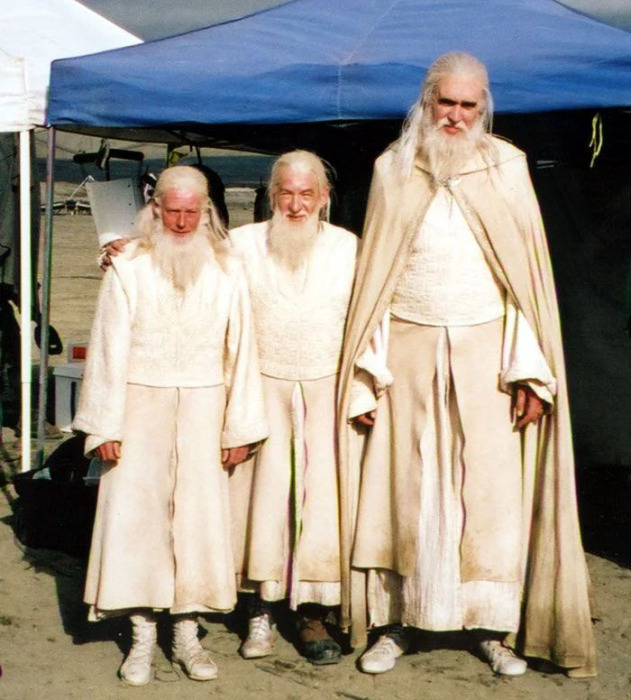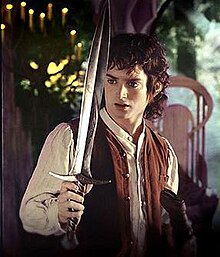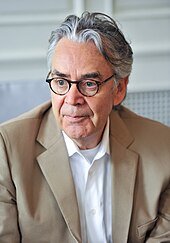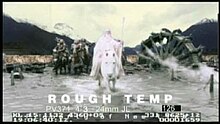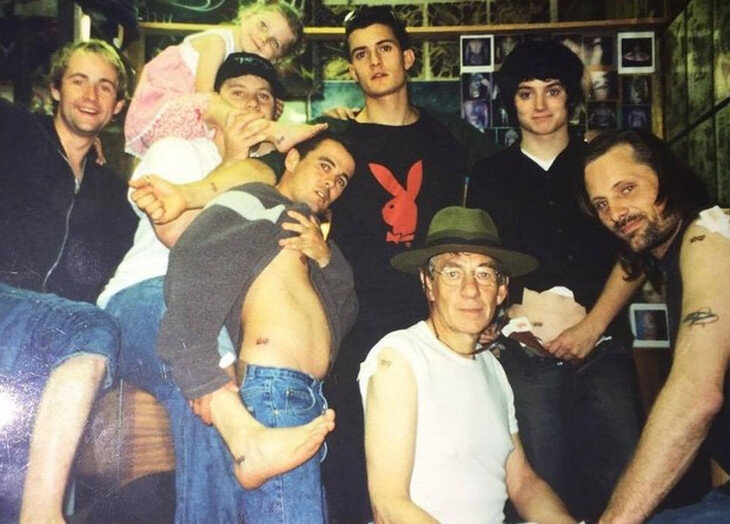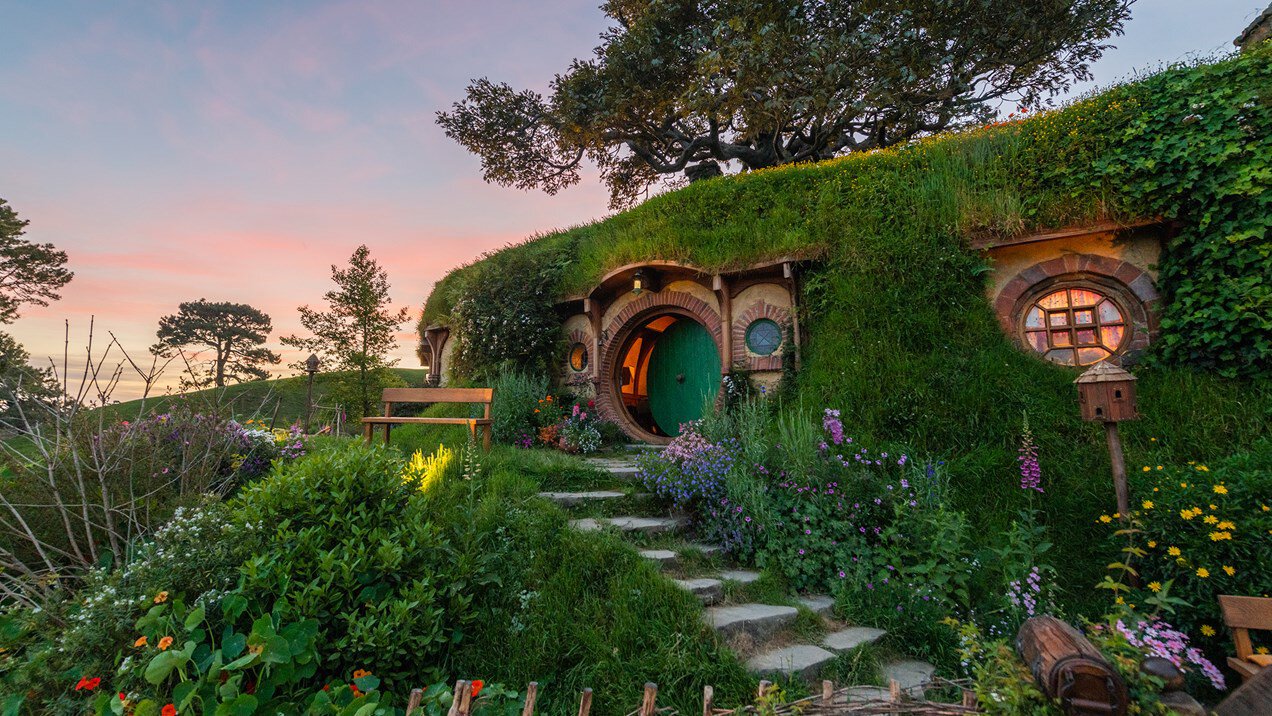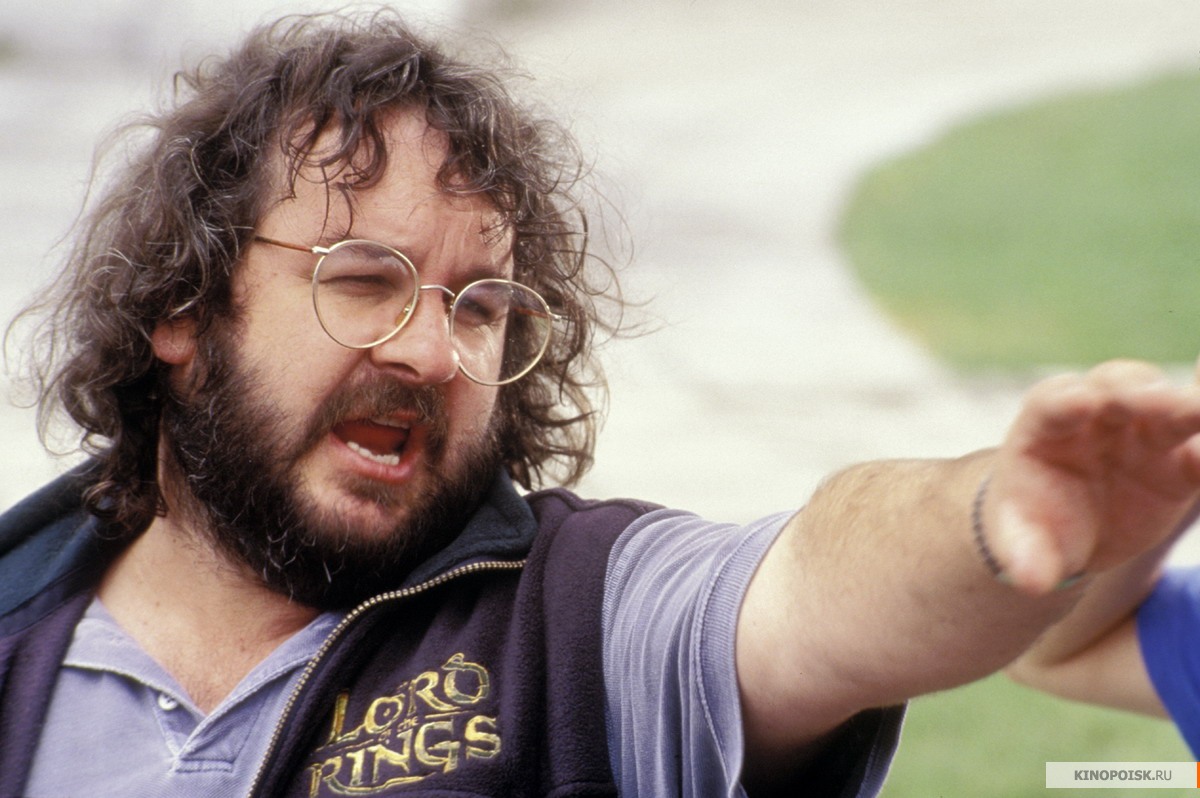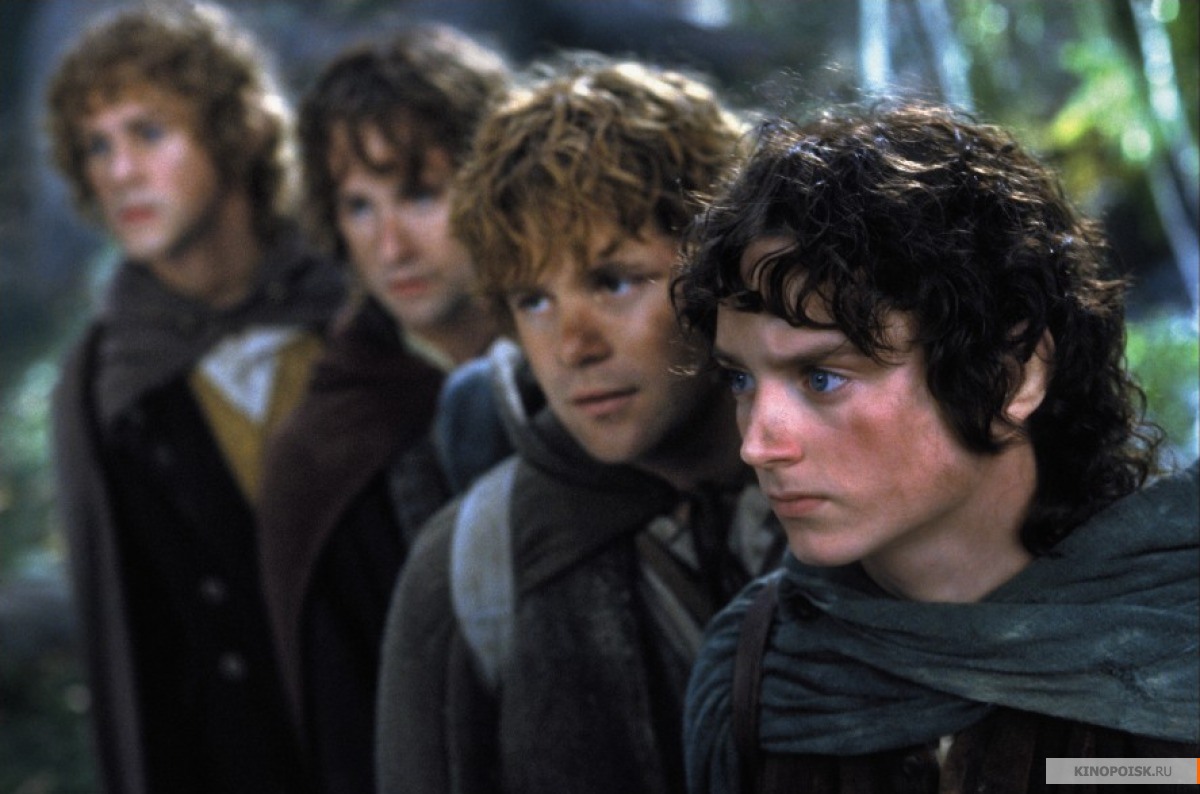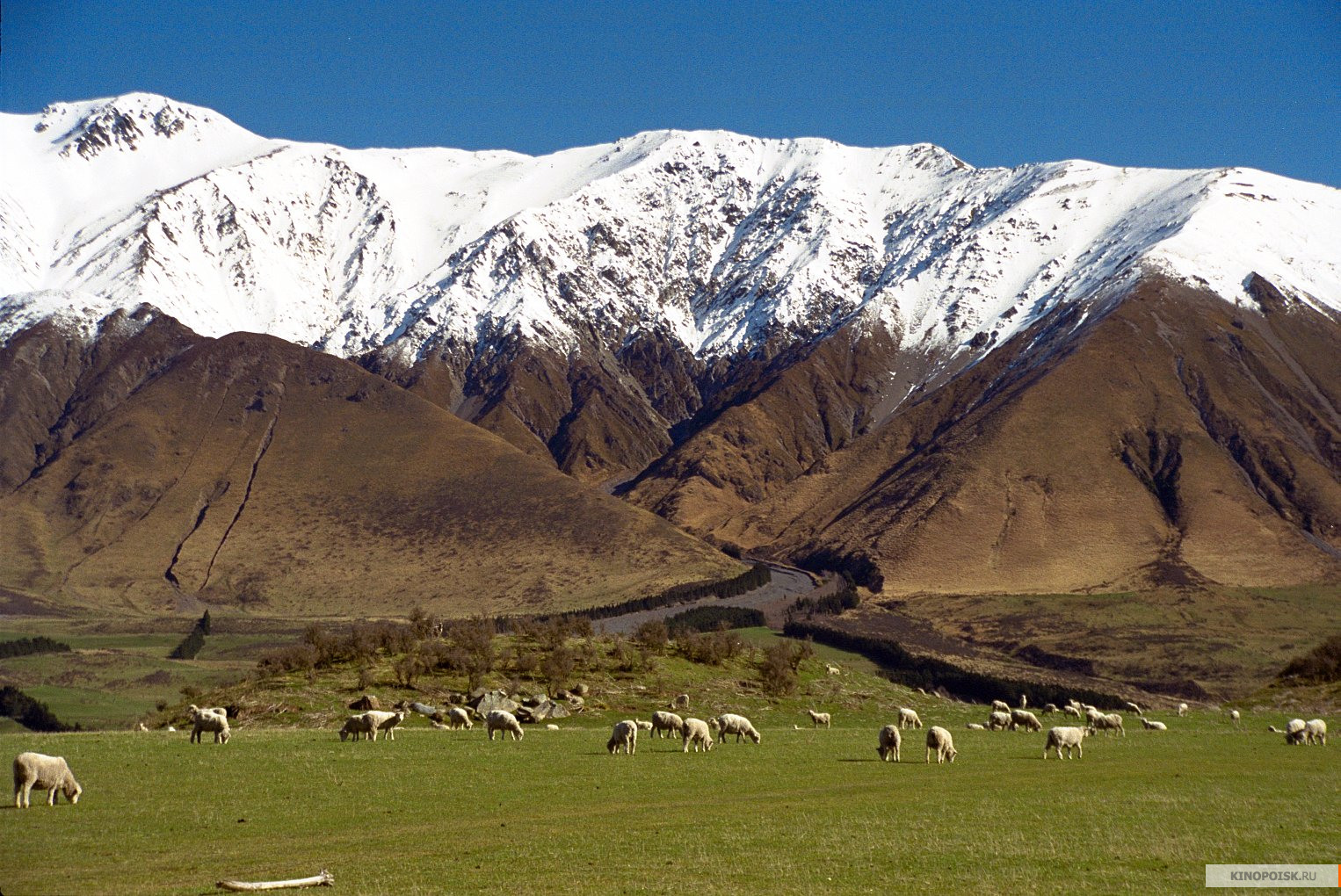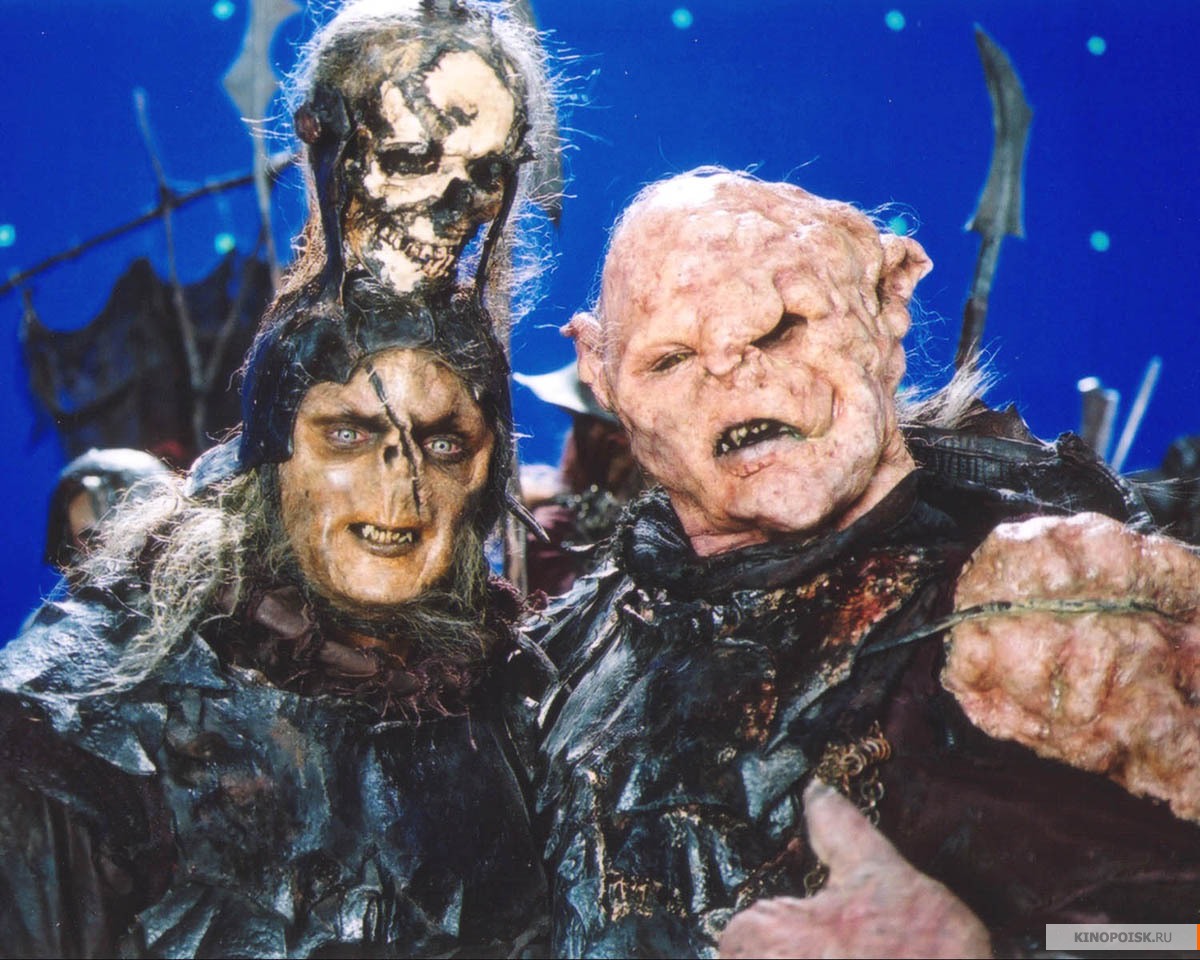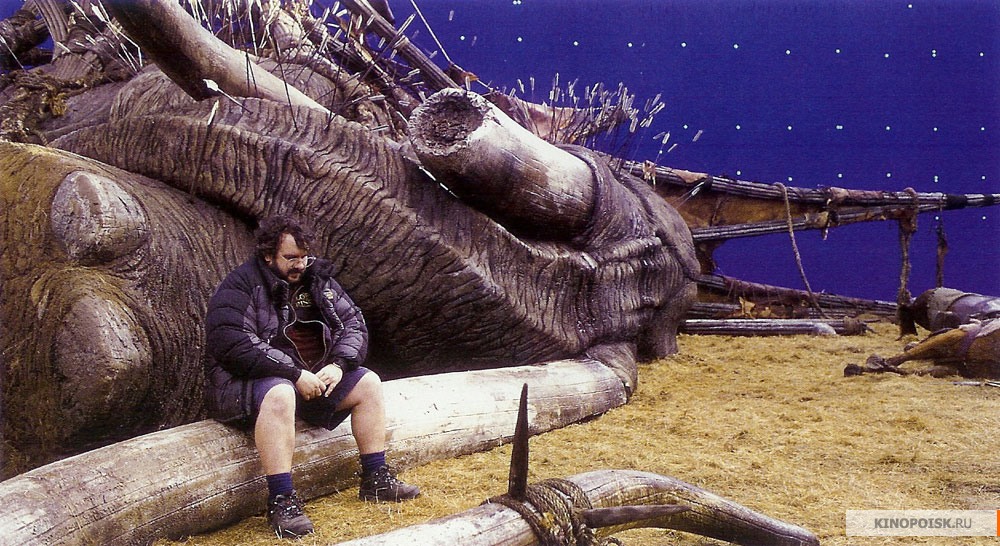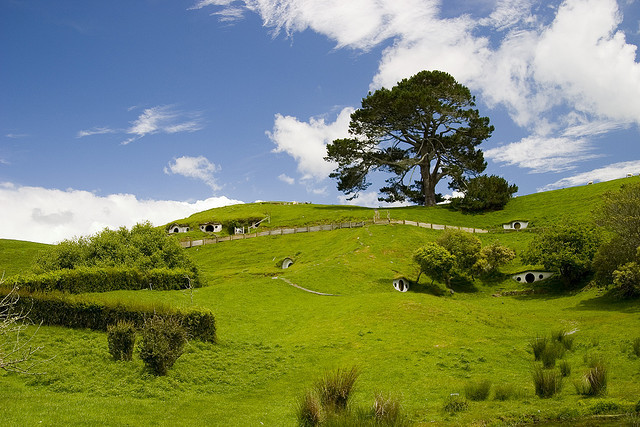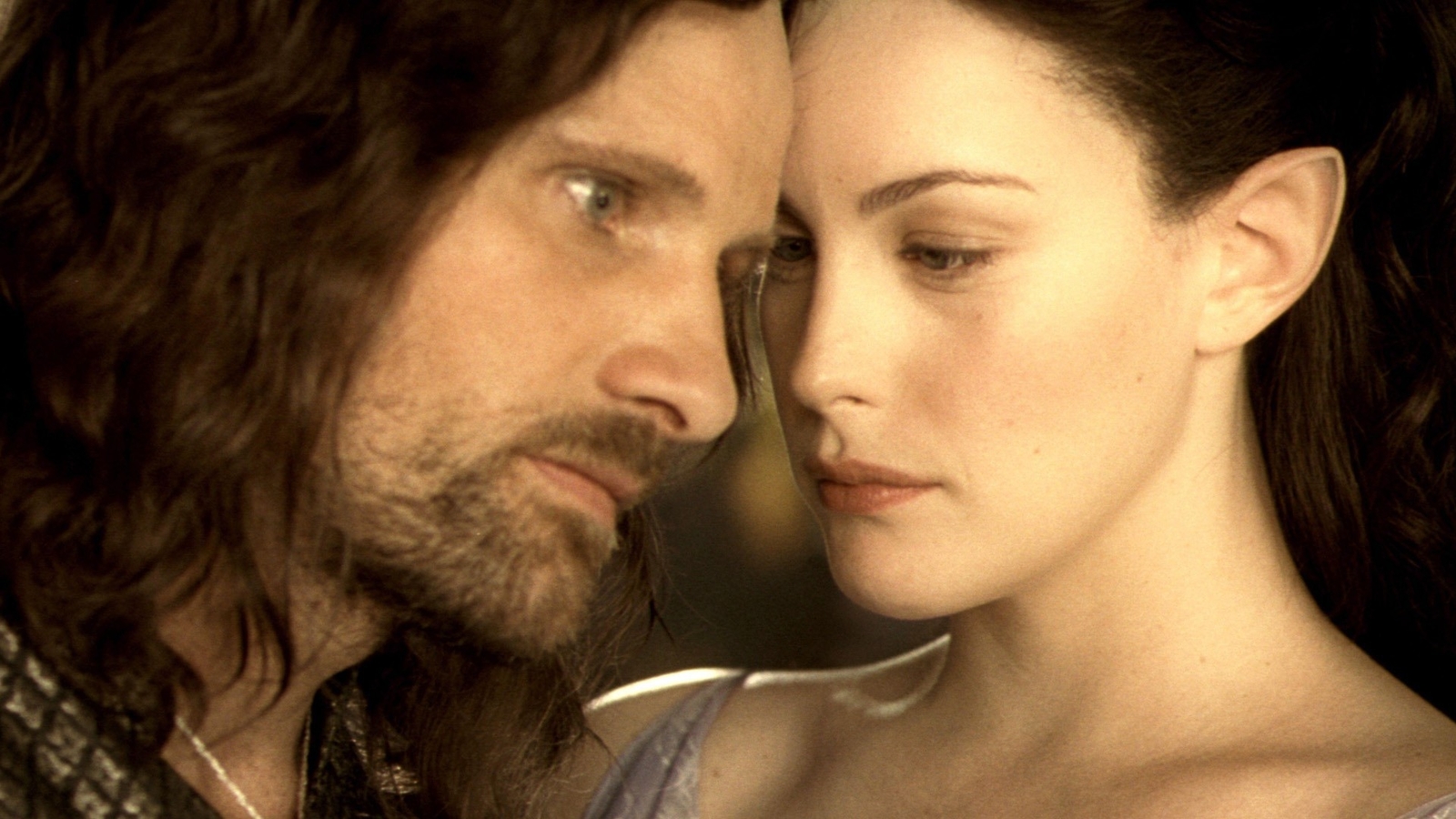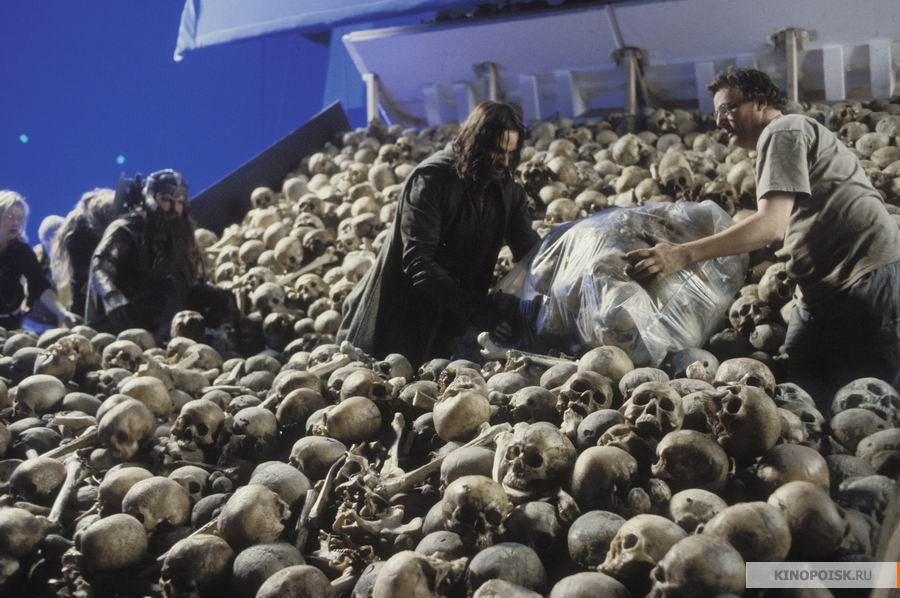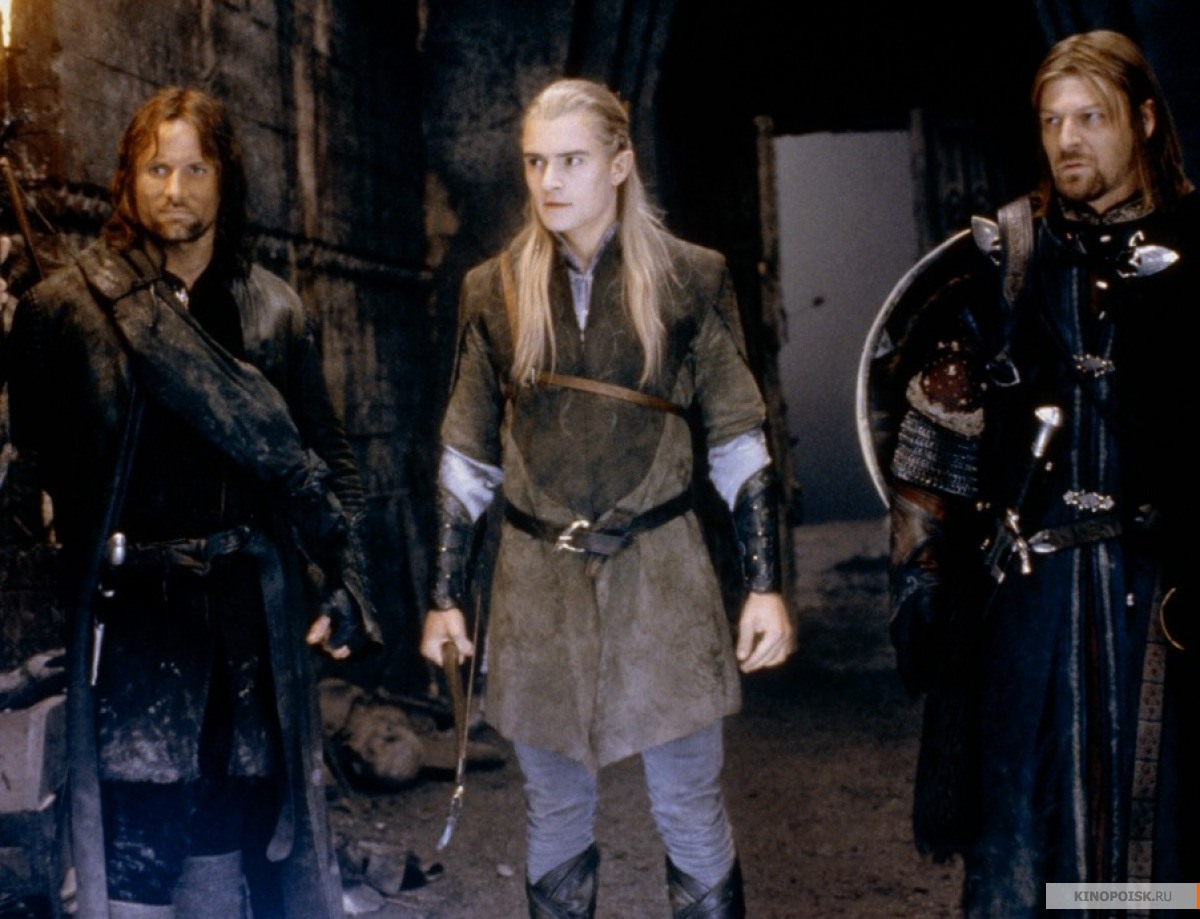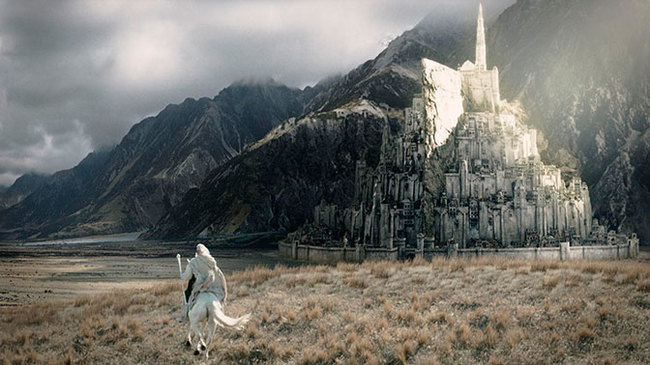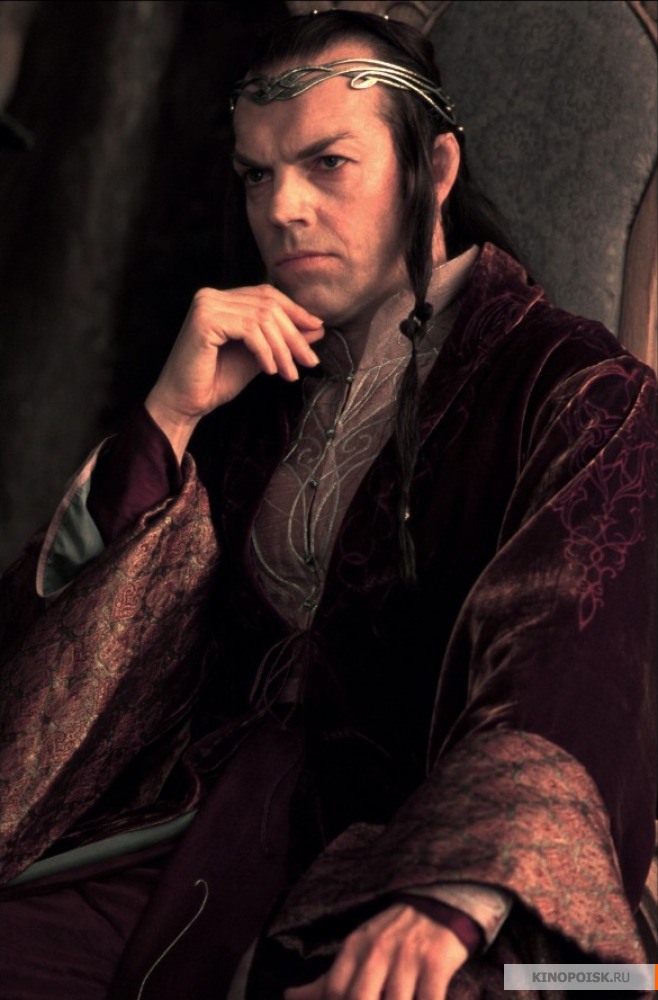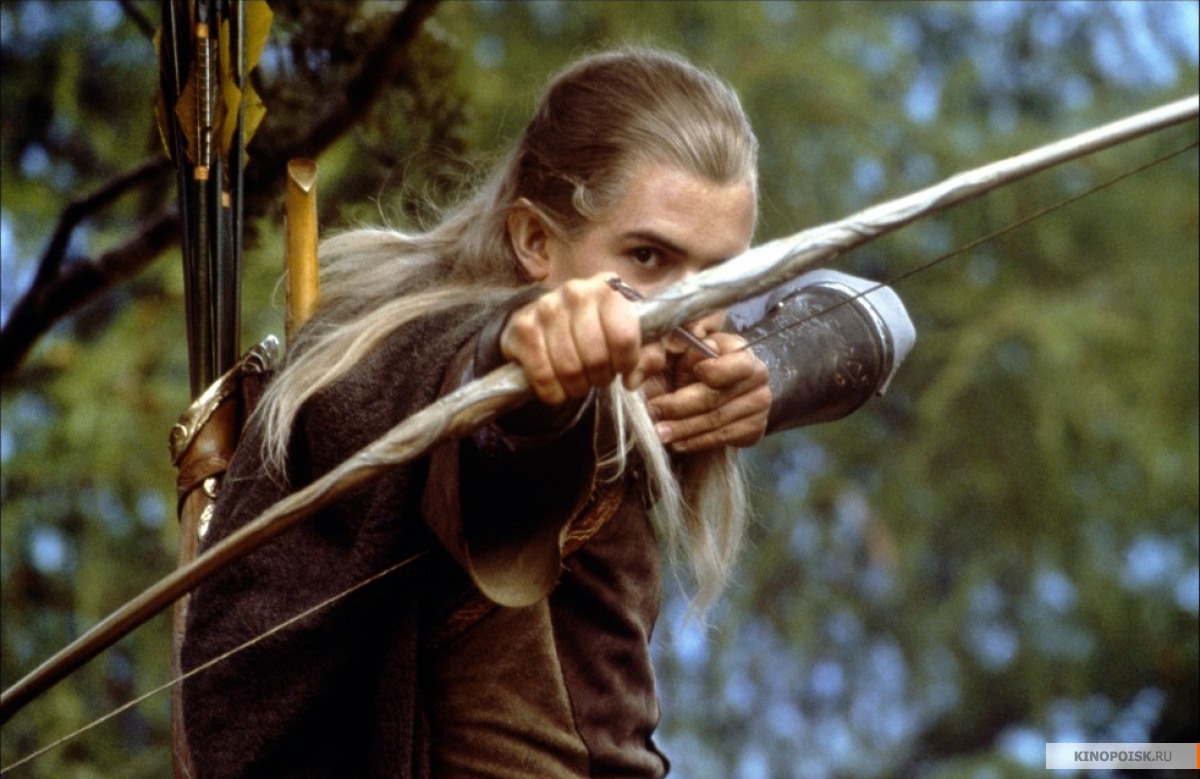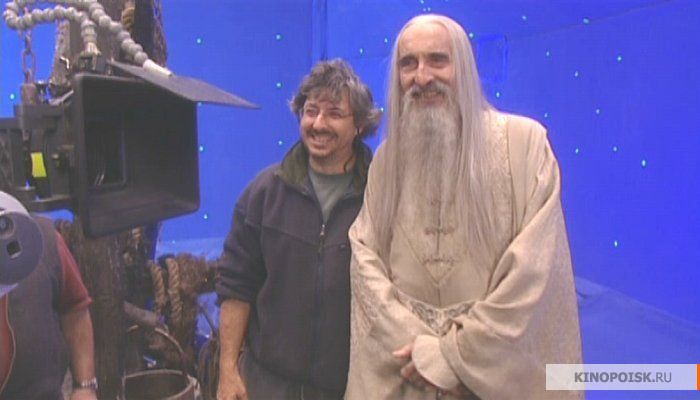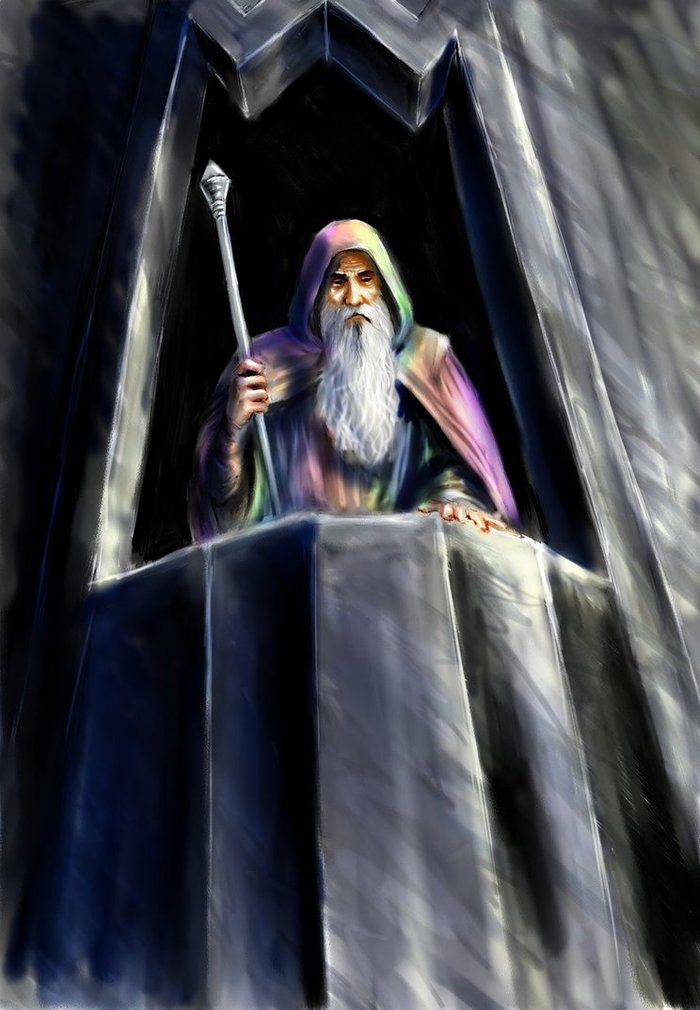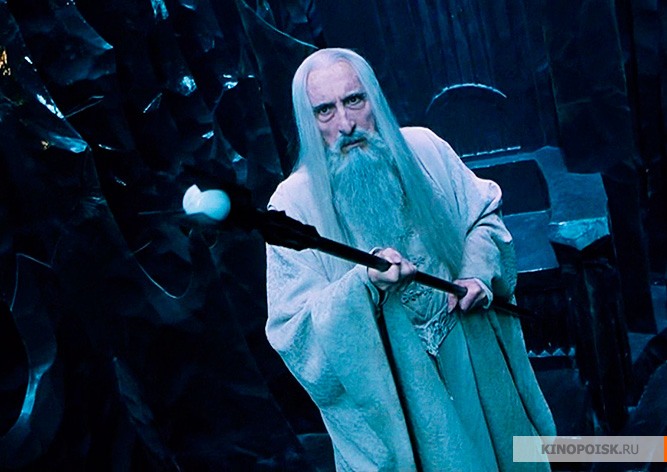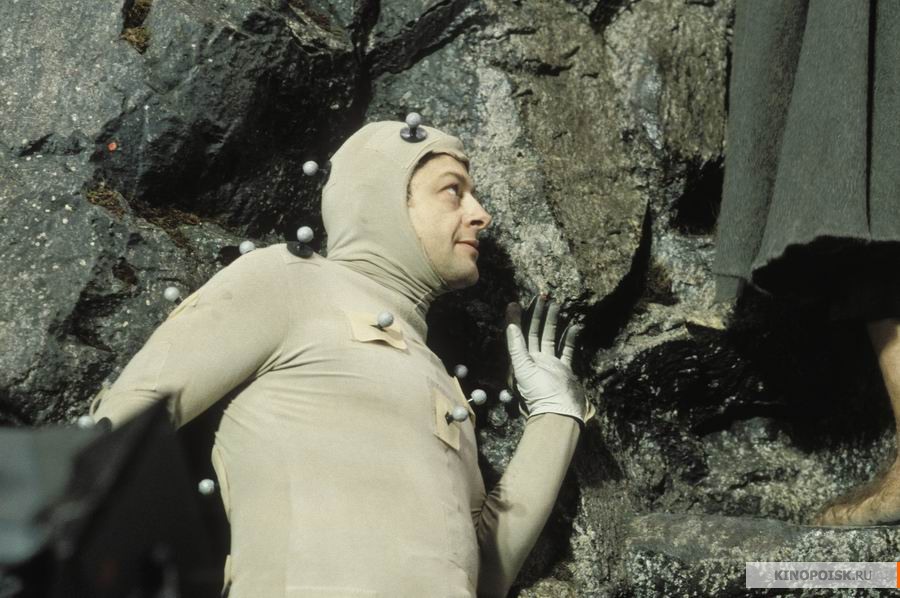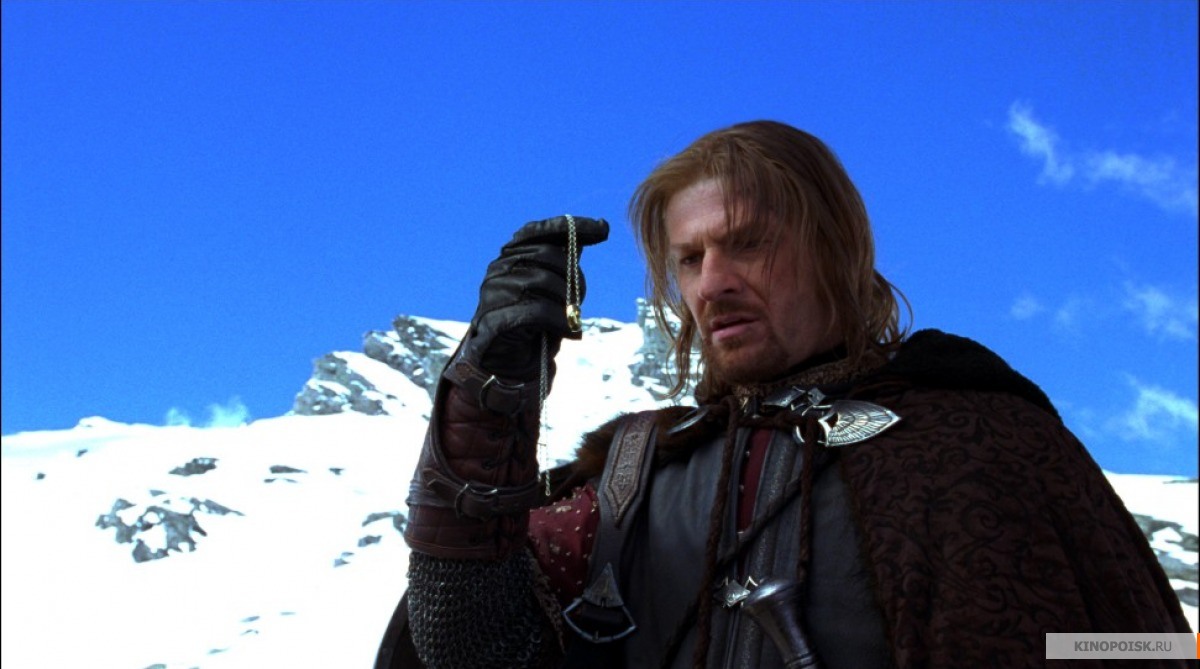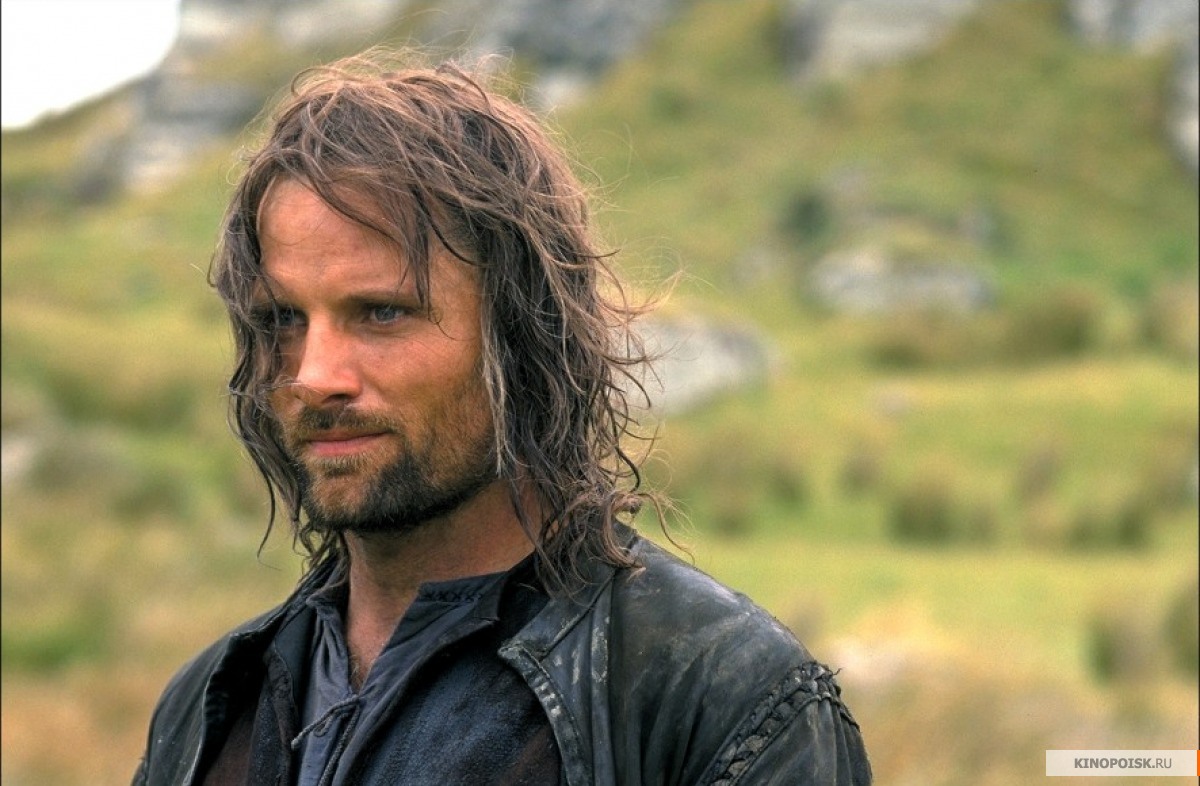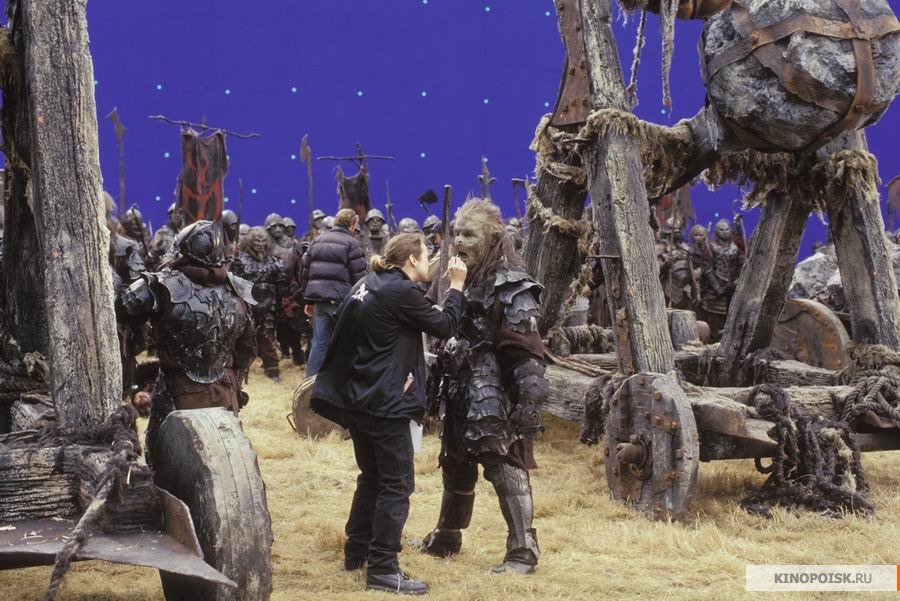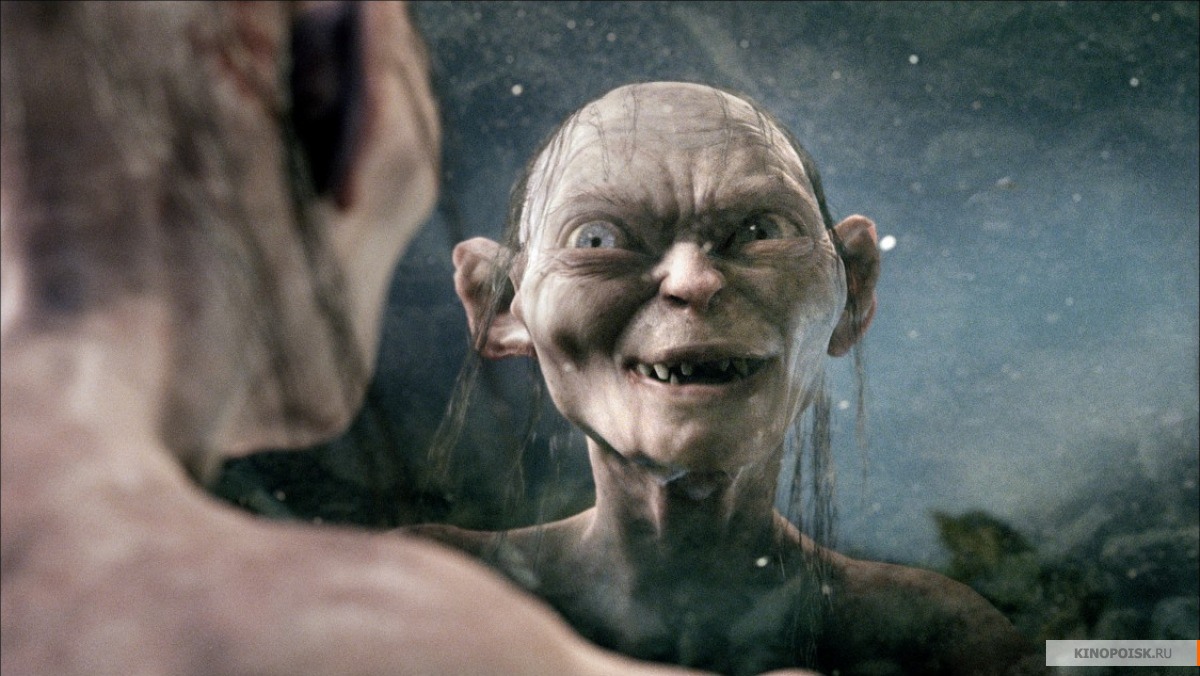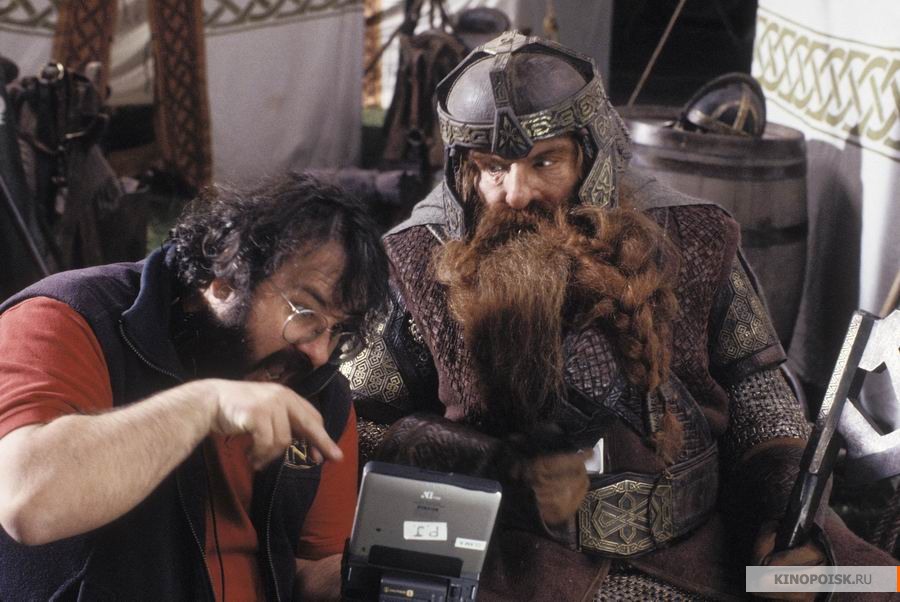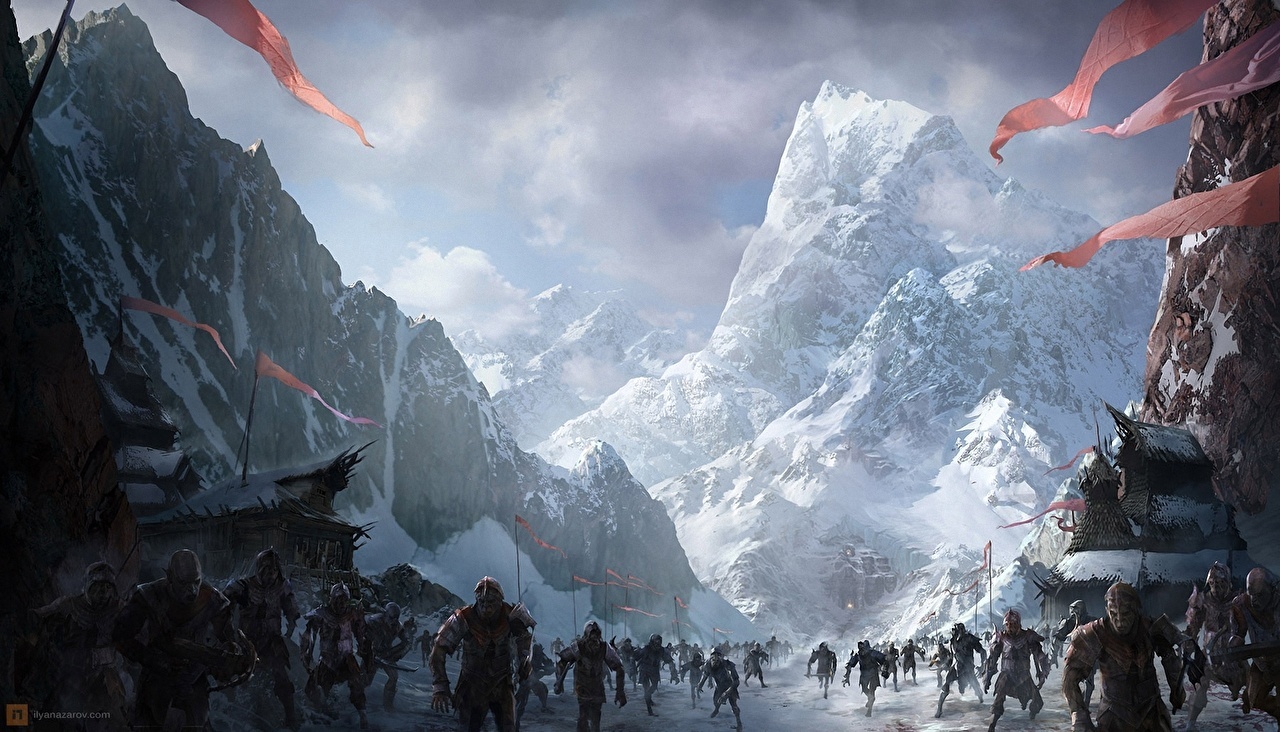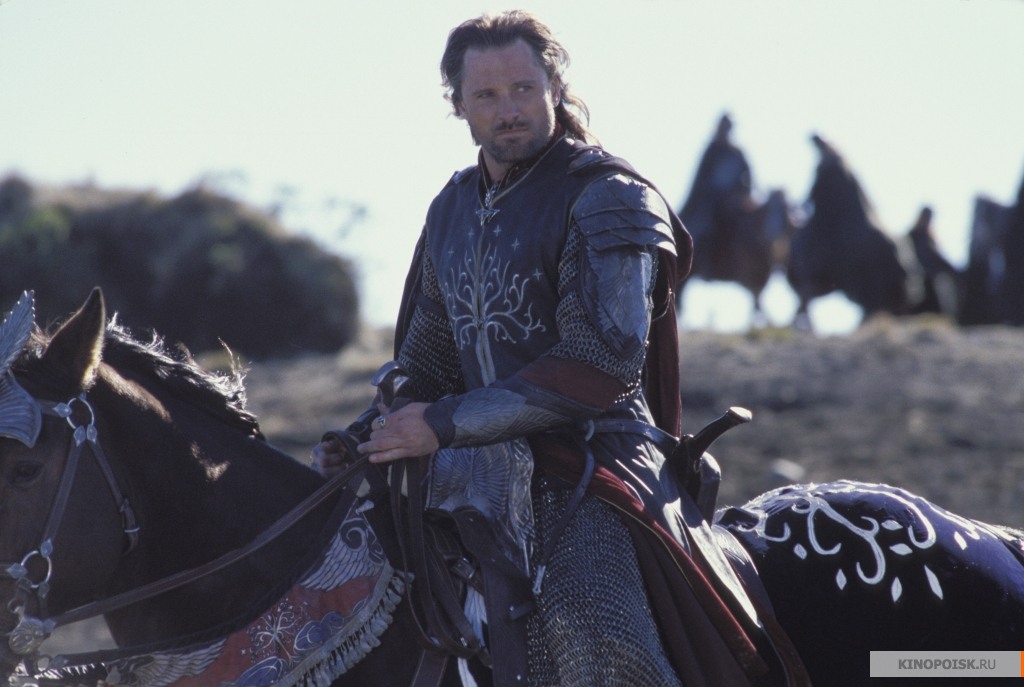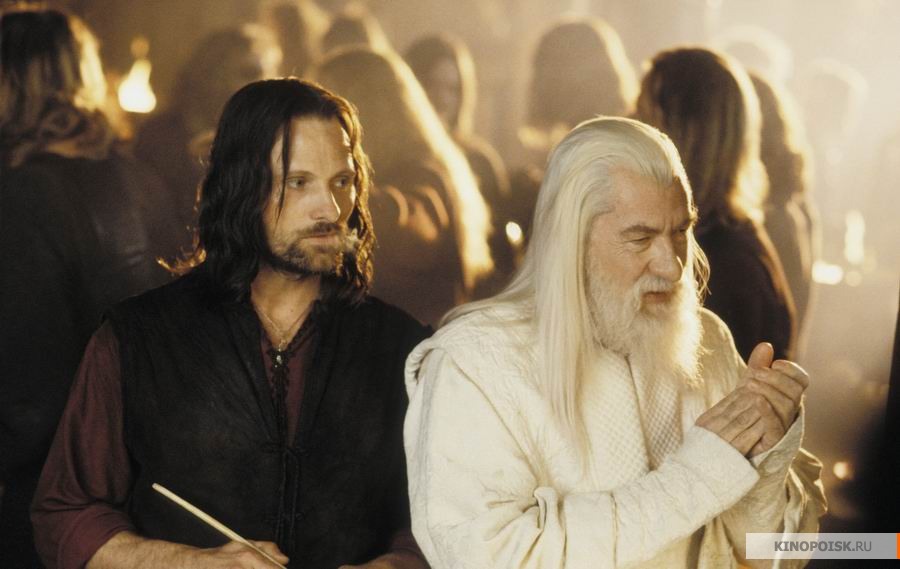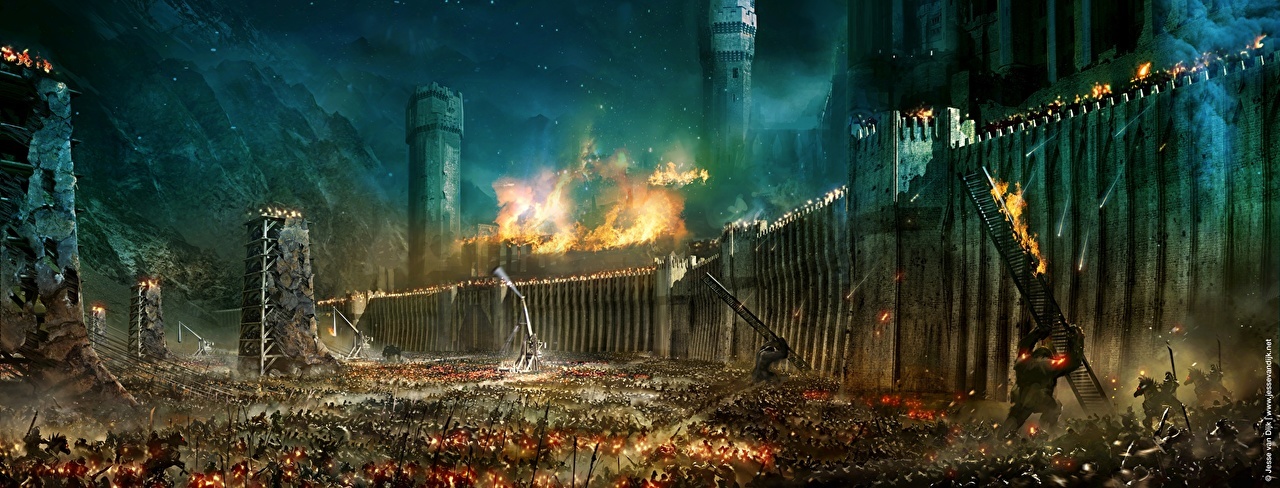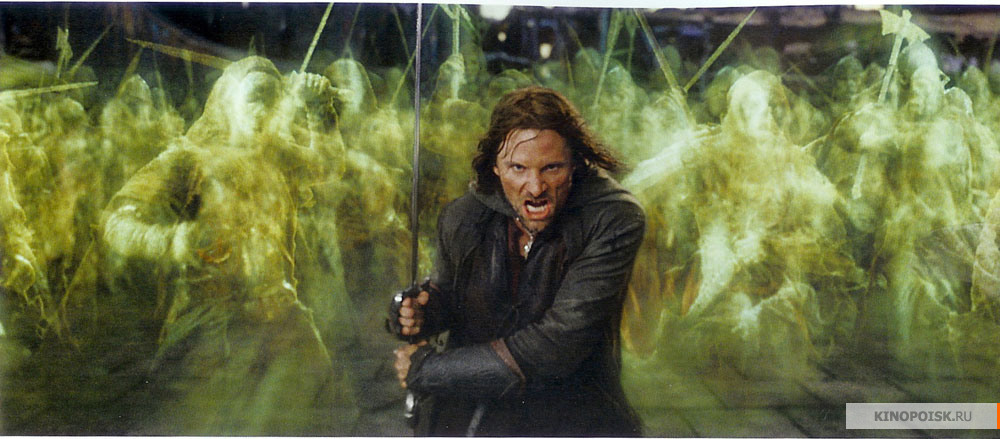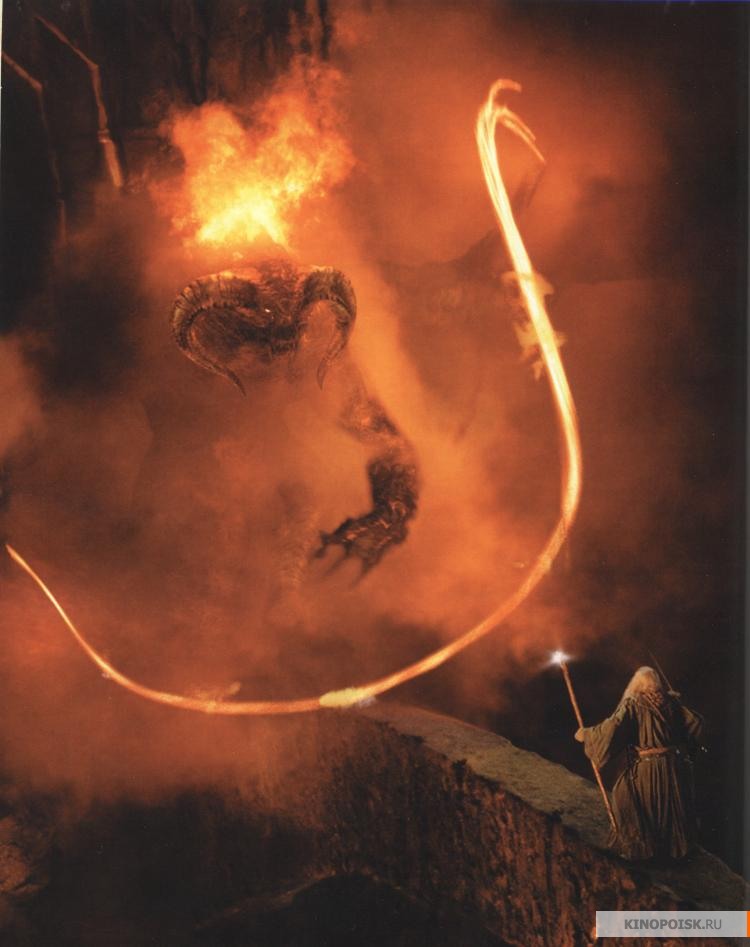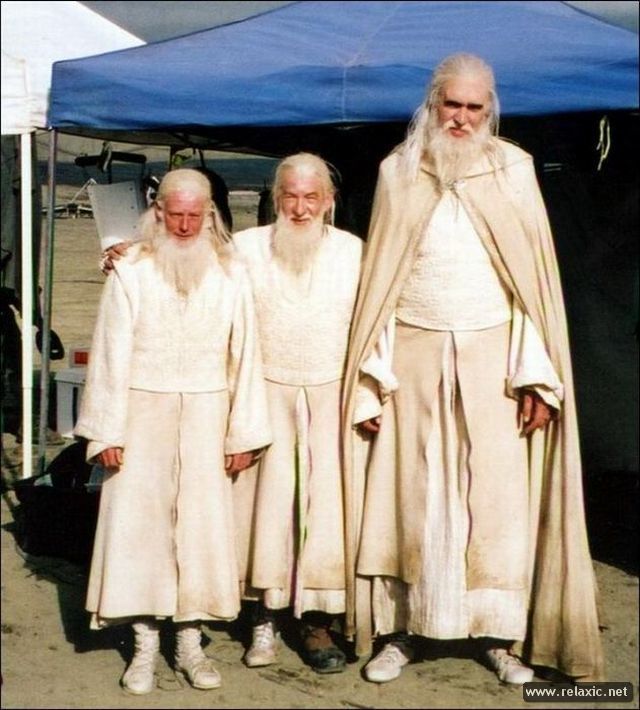Вспоминаем фильмы Джексона к премьере сериала Amazon.
2 сентября сервис Amazon Prime начнет выпускать сериал «Властелин колец: Кольца власти», историю о падении Нуменора и создании Последнего союза против Саурона. Мы вернемся в Средиземье через 19 лет после выхода фильма «Властелин колец: Возвращение Короля», последней части трилогии Питера Джексона.
В 2021 году, к юбилею первой части трилогии, редакция Deadline побеседовала с ключевыми создателями «Властелина колец» и попросила их рассказать, как создавались культовые фильмы. К выпуску «Властелина колец» от Amazon мы пересказываем самые интересные моменты из воспоминаний режиссёра Питера Джексона и основателя киностудии New Line Cinema Роберта Шея.
Трилогии могло и не быть. Питер Джексон в своё время был знаменит низкобюджетными картинами. Поэтому когда он начал предлагать амбициозный проект по роману Толкина киностудиям, они отказывались одна за другой.
Ничего удивительно. В плане у режиссёра было создать сразу три фильма с бюджетом 60 миллионов долларов каждый, съёмки планировалось проводить в Новой Зеландии. Потенциальные партнеры считали эту затею не просто неудачной, а провальной настолько, что любая студия, что этим займётся, будет обречена на закрытие.
Что ты видишь? На стадии переговоров Роберт Шей пытался уговорить Джексона не снимать трилогию в Новой Зеландии. Но, будучи урождённым новозеландцем, Питер уступать не стал.
Когда я впервые приехал к Питеру в гости в Новую Зеландию, мы сели посмотреть фильм про Джеймса Бонда. Я уже не помню какой. На моменте, когда в кадре появилась такая стеклянная карта мира, Питер поставил на паузу и спросил меня: «Что ты видишь?». Я не знал, что ответить. И тогда он показал на область рядом с Австралией и сказал: «Посмотри. Новой Зеландии нет на карте». Потом глянул мне прямо в глаза и продолжил: «Но будет».
Роберт Шей
Три в одном. Питер Джексон с самого начала решил, что вся трилогия будет сниматься не с перерывами в несколько лет, а одновременно. Причин тому было несколько: стареющие актёры и отказ правительства Новой Зеландии терпеть бесконечные разъезды и беспорядок.
Душевный расчёт. Дистрибьюторы к трилогии отнеслись с опаской: обычно они занимаются одним фильмом, а тут надо было взяться сразу за три. Если бы первый провалился в прокате, то за собой он потащил бы и оставшиеся. Однако несмотря на переживания, основной причиной согласия стал энтузиазм, а не холодный расчёт.
Экономили как могли. Чтобы не приглашать статистов и не заказывать для них костюмы, Питер Джексон нашёл новозеландскую студию Wingnut, которая разработала специальный алгоритм генерирования больших толп людей.
Ещё меньше спецэффектов. Хоббитов не уменьшали, а людей не увеличивали. Чтобы показать разницу в росте, использовали принудительную перспективу и фокусное расстояние.
60 пишем, 300 в уме. Изначально Питер Джексон говорил о бюджете в 60 миллионов долларов на каждый фильм. Но после того, как съёмочная группа съездила в Веллингтон, стало ясно, что сумму придётся увеличить в два раза. Роберт Шей, осознав, что они рискуют более чем 300 миллионами долларов, схватился за сердце.
И потом до меня дошло, что этот парень [Питер Джексон] обычно снимает фильмы с бюджетом 50, 60 и 70 тысяч долларов. А мы собираемся дать ему целых 300 миллионов. Это было настоящее безумие. В жизни так не паниковал.
Боб Шей
Этот чёртов фильм. Когда переживания за растущий словно на дрожжах бюджет достигли апогея, с режиссёром решил поговорить президент New Line Cinema — Майкл Линн. Всё бы ничего, но Питер тогда был занят съёмками высоко в горах, где и в помине не было сотовой связи. Тогда его попросили спуститься в низину, где связь была, и ответить на угрозы о том, что его засудят и отберут дом.
И тогда я ответил: «Скажи этому Майклу Линну, что я занят съёмками этого чёртового фильма. И что я делаю всё от меня зависящее. И что я не собираюсь прерываться на телефонный звонок».
Питер Джексон
Не плачь, Боб. После того, как съёмки первого фильма были окончены, Питер полетел в Лос-Анджелес, чтобы показать компании и дистрибьюторам часть отснятого материала. Дело происходило в доме Боба Шея. Перед показом Боб попросил Питера проследовать за ним. Они зашли в ванную комнату.
Он сказал тогда: «Пожалуйста, Питер, пожалуйста. Тут все наши партнёры. Они надеются на то, что фильмы будут успешными. Если что-то пойдёт не так, они все разорятся. Это очень важно. Я не могу подвести всех этих людей». И потом он заплакал.
Сплошной негатив. Люди знали о том, что New Line Cinema снимает три фильма одновременно. В медиа постоянно мелькали новости о неоправданных рисках, финансовой катастрофе, надвигающемся провале и том, что фэнтези практически всегда проваливаются в прокате.
Спасибо большое. Ознакомившись с этими новостями, Питер Джексон решил во что бы то ни стало снять самые лучшие фильмы всей своей жизни.
Первое впечатление. Чтобы заткнуть рты всем диванным критикам, Питер Джексон и Боб Шей отправились на Каннский кинофестиваль с 26-минутным отрывком фильма. Да не с пустыми руками: с собой привезли реквизит стоимостью в 2 миллиона долларов.
Французское шато в Каннах они превратили в уменьшенную копию Средиземья. С пещерными троллями, домиком Фродо в Шире и даже Назгулами.
Многие думают, что судьба фильма решается в первые выходные проката. Я же посчитал, что первыми выходными для нас станут Канны. Тем более все наши дистрибьюторы приехали посмотреть на то, что у нас получилось.
Питер Джексон
Эйфория. Стоит ли говорить, что показ в Каннах оправдал ожидания партнёров и, что самое главное, самих актёров. Полтора года они снимались на фоне зелёного экрана и понятия не имели о том, как выглядит конечный продукт. Увидев же на экранах Барлога, Мордор и воюющих орков, поняли, что они создали нечто великое.
Удачи. Боб Шей на вопрос о том, как он расценивает затею Amazon Studios снять сериал по «Властелину Колец» без Питера Джексона, ответил философски: «Заранее судить не буду. Но желаю всего хорошего».
XXI век стал эрой цифрового кино. Сегодня большинство спецэффектов выполняются с помощью компьютерной графики, однако создатели культовой трилогии «Властелин колец» обошлись достаточно простыми, но эффективными способами. Главной задачей стало изменение размеров персонажей.
Секрет роста
Хоббиты – человечки невысокие, но и не совсем крохи. При подготовке к съемкам решили, что их рост будет составлять 75% от размера обычных персонажей, т.е. около 120 см. Чаще всего подобные задачи решались в кинематографе с привлечением «маленьких людей» — актеров, в амплуа которых всегда входили гномы и тому подобные сказочные крохи. К счастью, режиссер трилогии Питер Джексон сразу отказался от этого накатанного пути. Правда, для достижения нужного эффекта всей съемочной группе пришлось применить максимум изворотливости. Некоторые из приемов были уже хорошо известны, некоторые придумывались на ходу.
Кадр из к/ф «Властелин колец»
Метод принудительной перспективы сегодня активно эксплуатируется для создания оригинальных (и не очень) фотографий, на которых, например, огромная невеста может держать на руке малюсенького жениха. Секрет прост: чтобы «уменьшить» размеры фигуры, ее отодвигают подальше от камеры, а остальные объекты снимают в натуральную величину.
Хоббитов в кадре отодвигали от объектива на треть дальше, чем остальных актеров. То есть, если нужное расстояние от камеры было 10 м, то полуросликов снимали с дистанции 13,3 м. Так они становились меньше в общих сценах. Немного сложнее «выстраивался кадр» в тех случаях, когда персонажи должны были находиться рядом друг с другом. Например, когда Фродо едет в тележке с Гэндальфом, Элайджа Вуд на самом деле сидел на удалении от Иена МакКеллена, но при определенном ракурсе этого не заметно, а вот эффект перспективы достигался. Такой способ можно охарактеризовать двумя словами: «дешево и сердито» — при минимальных затратах результат получался великолепным.
Кадры в тележке – прекрасный пример изменения перспективы
Правда, если приходилось снимать в принудительной перспективе движущиеся объекты, задача усложнялась. Правда, и здесь были использованы давно наработанные принципы – старый прием с движущейся камерой, но так как требовалась большая точность, чтобы не сбивалась перспектива, то специально для «Властелина колец» была разработана дополнительная технология «motion control».
Декорации в помощь
Конечно, изменение перспективы не могло решить всех проблем. Чтобы создать иллюзию размера персонажей использовали большие (для хоббитов) и маленькие (для остальных) декорации одних и тех же мест. Такой эффект мы можем заметить в домике Бильбо, а также в таверне «Гарцующий пони». Для съемок были выполнены два абсолютно одинаковых, но различающихся по размеру комплекта предметов и декораций.
Секрет этого кадра – второй набор декораций, меньшего размера
Не менее важную роль сыграли костюмы. Некоторую одежду создавали огромной, и актерам приходилось надевать ходули. Этот спецэффект, хоть и создавал иллюзию того, что хоббиты меньше остальных, оказался не самым практичным: шлемы и доспехи орков были в полтора раза больше нормальных размеров. Играть в тяжелом реквизите неудобно, поэтому требовались постоянные перерывы. Особенно досталась оркам в момент, когда они несли Мерри и Пиппина. Мало того, что костюмы тяжелые, так еще и двух мужиков тащить пришлось! Кстати, этот способ также придумали и впервые применили во «Властелине колец».
Братья наши меньшие и братья наши большие
К помощи низкорослых актеров все-таки пришлось обратиться. Чаще всего их использовали в тех кадрах, где не было крупных планов, и для дополнительного сходства надевали латексные маски с лицами 4-х главных хоббитов и парики. Дублеры в них почти ничего не видели, зато кадры получались замечательные.
Элайджа Вуд и его дублер Киран Шах
А для Гэндальфа, наоборот, был подобран похожий актер очень высокого роста. Он заменял мага в тех случаях, когда нужно было показать его крупную фигуру рядом с полуросликами. Наверное, самым забавным оказался дублер… лошади. Пони, который вез багаж путешественников через перевал, был ненастоящим. Съемочная группа не знала, как будет себя вести реальное животное, поэтому решили не испытывать судьбу. Лошадки в кадре почти не видно, и с такой необычной ролью справились две девушки.
Йен Маккелен и его дублеры
Изобретательность съемочной группы достойна восхищения, ведь они умудрились создать фильм, спецэффекты которого поражают и двадцать лет спустя. Большинство зрителей уверены, что «Властелин колец» снимался с использованием компьютерной техники, но на самом деле создатели трилогии в большинстве случаев обходились «старыми дедовскими способами», но поднятыми на невероятный уровень мастерства.
Трилогия «Властелин колец», несомненно, входит в список 10 великих киноэпопей, поражающих своим масштабом даже бывалого зрителя
Понравилась статья? Тогда поддержи нас, жми:
The production of The Lord of the Rings film series under Peter Jackson’s direction was an enormous challenge, starting in 1997 and ending in 2004. Many earlier attempts had failed; most that had reached the screen were animations, and many filmmakers and producers had considered how to achieve the task and then set it aside. The series as realized consists of three epic fantasy adventure films based on J. R. R. Tolkien’s eponymous novel. They were produced by New Line Cinema, assisted by WingNut Films; the cinema versions appeared between 2001 and 2003, and the extended edition for home video in 2004. Development began in August 1997. The three films were shot simultaneously, entirely in Jackson’s native New Zealand, from October 1999 until December 2000, with pick-up shots from 2001 to 2003.
Storyboarding began in 1997; the Tolkien illustrators Alan Lee and John Howe worked as conceptual artists throughout the project, Lee mainly on architecture, Howe on characters such as Gandalf and the Balrog. Extensive sets were built, including the village of Hobbiton. Weta Workshop created armour, weapons, prosthetics, creatures and miniatures. Some of the miniatures, such as of the city of Minas Tirith, were very large and extremely detailed, becoming known as «bigatures». The work was driven by Jackson’s desire for realism, to give the effect of history rather than fantasy. Animals were studied to make the creatures biologically believable; weapons and armour were based on appropriate medieval or classical era peoples. Some 48,000 pieces of armour, 10,000 arrows, 500 bows, 10,000 Orc heads, 1,800 pairs of Hobbit feet serving as shoes, and 19,000 costumes were created for the filming.
The composer Howard Shore saw the set in August 2000 and watched the assembly cuts of the first two films. He created around 100 leitmotifs to represent themes (such as the Ring), cultures, and characters, a record in the history of cinema, resulting in a long, complex and award-winning film score.
Special effects broke new ground in filmmaking, from prosthetics to almost wholly digitally-realized creatures such as Gollum. The Hobbits are represented as 107 cm tall, and the Dwarves as 137 cm tall, requiring sets both at normal scale for Men and Elves, and at larger scale for Hobbits and Dwarves — these were able to use the same scale of sets by virtue of the casting of shorter actors for Hobbits, taller actors for Dwarves. Monsters such as trolls, the Watcher in the Water, the Balrog, and the Ents were created entirely with computer-generated imagery, requiring months of design work from sketches to maquettes and finally computer work. Many scenes were created by filming natural scenery or miniatures, and combining these images with those of actors on a green-screen studio set.
Development[edit]
Previous adaptations[edit]
Tolkien’s novels The Hobbit (1937) and The Lord of the Rings (1954–55), set in Middle-earth, were the subject of many early failed attempts to bring the fictional universe to life in screen. Tolkien was skeptical of the prospects of an adaptation.[1] While animated and live-action shorts were made in 1967 and 1971, the first commercial depiction of one of his books onscreen was in an animated TV special of The Hobbit in 1977.[2] In 1978 the first big screen adaptation of the fictional setting was introduced in Ralph Bakshi’s animated The Lord of the Rings.[3]
The rights to adapt Tolkien’s works passed through the hands of several studios, having been briefly leased to Rembrandt films[4] before being sold perpetually to United Artists,[5] who then passed them in part to Saul Zaentz (which did business as Middle-earth Enterprises). Filmmakers and producers interested in an adaptation included Walt Disney,[6] Al Brodax, Forrest J Ackerman,[7] Samuel Gelfman, Denis O’Dell (who contacted David Lean, Stanley Kubrick and Michelangelo Antonioni to direct),[8] and Heinz Edelmann.[6]
At the time that Bakshi’s film was released, a teenaged Peter Jackson had not read the book,[9] and went to see the film: «I liked the early part – it had some quaint sequences in Hobbiton, a creepy encounter with the Black Rider on the road, and a few quite good battle scenes – but then, about half way through, the storytelling became very disjointed and disorientating and I really didn’t understand what was going on. However, what it did do was to make me want to read the book – if only to find out what happened!»[10] He then read the book,[11][12] thinking it would make for a great live-action film. He assumed that Disney or filmmakers like George Lucas or Steven Spielberg would eventually produce one for him to see, but realized it would have been impossible to adapt at the time.[13][14][15] An amateur filmmaker, he soon tried making original fantasy films inspired by Jason and the Argonauts and Conan the Barbarian. He did not revisit the books until 1997, thinking that he would be out of his depth to adapt them.[16]
Early development[edit]
In 1995, Jackson and his partner Fran Walsh were finishing The Frighteners and considered doing an original high-fantasy film to keep their special effects company in business. With the new developments in computer-generated imagery following 1993’s Jurassic Park, Jackson set about planning a «Lord of the Rings-type of story» but whenever he and Walsh tried conceiving of a story, they ended with something so similar to Tolkien’s books as to be considered derivative. Jackson began wondering «why nobody else seemed to be doing anything about»[12] adapting Tolkien to live-action, and at his request, his agent Ken Kamins tracked the rights to Saul Zaentz.[16]
Since Heavenly Creatures, Jackson was in a contract with Miramax. While he and his lawyer were unsure whether he was contractually obligated to bring his pitch to Miramax first, Jackson decided to do so out of courtesy, only to realize upon calling Harvey Weinstein that he had recently rescued Zaentz’ production of The English Patient, and could therefore leverage the rights from him. Jackson realized it would take multiple films to adapt the books properly,[17][18] but pitched a single trilogy: one film based on The Hobbit and, if that were to prove successful, a two-part adaptation of The Lord of the Rings, shot back-to-back and released six months apart.[19]
Negotiations with Zaentz were elongated due to Weinstein’s intention to keep Zaentz from producing the film himself, and by the fact that the distribution rights for The Hobbit were left in United Artists’ hands. Miramax tried to buy the rights from the studio in vain.[16] By April 1996, Jackson had reread The Hobbit and commissioned WETA to produce concept art,[20] when Weinstein suggested postponing it to a potential prequel.[16]
Weinstein’s dalliance led Jackson to take up an offer from Universal Studios to film a remake of King Kong.[16] Weinstein was furious, but Jackson still intended to make The Lord of the Rings immediately afterwards, and had the book to hand, re-reading the prologue. Indeed, he suggested that Miramax and Universal co-distribute both films, to which Weinstein agreed once Universal threw Shakespeare in Love into the deal, as well.[16]
Peter Jackson in 2003, at the premiere of The Return of the King in Wellington
Pre-production for Miramax[edit]
When Universal cancelled King Kong in 1997,[21] Jackson and Walsh immediately received support from Weinstein and began a six-week process of sorting out the rights. Jackson and Walsh asked Costa Botes to write a scene-by-scene synopsis of the book, which Jackson then rearranged as the basis for his screen treatment.[22] They also consulted Tolkien’s letters and some academic writing done on his works.[15]
Immediately after King Kong‘s cancellation, Jackson clarified to Weinstein that he still intended to make two films, but concerns expressed by Miramax led him to try and write the treatment as a single film, «but by the time we had got to the end, it was clear that we were talking about two films.»[22] At the story conference in Miramax (during which the Bakshi cartoon was screened),[23] the Weinsteins «blanched»[22] but accepted this. While writing the treatment, Jackson considered doing three films[17] and «shaped our treatment into three parts» before Miramax rejected the idea.[22][17]
Between the synopsis and the treatment, Jackson decided to cut Gildor, Crickhollow, the Old Forest, Tom Bombadil, the Barrow Wights, Bill Ferney, Radagast, Lothlorien and Ghan-Buri-Ghan. The final treatment divides the story into two parts: The Fellowship of the Ring (which covered the eponymous novel but also The Two Towers) and The War of the Ring. The first opens immediately with the Battle of the Last Alliance (in what Jackson called a «James Bond» opening) and ends with Saruman’s death, and Gandalf and Pippin (the latter having looked into the Palantir) going to Minas Tirith.[22][23]
In this treatment, Farmer Maggot and Glorfindel are present; Gwaihir and Gandalf visit Edoras after escaping Saruman, and Eowyn and Eomer help him find Shadowfax against the wishes of a possessed Theoden. Gollum attacks Frodo when the Fellowship is still united, a struggle during which the Ring falls into the mud and is picked up by Boromir. Bilbo attends the Council of Elrond and Sam looks into Galadriel’s mirror. At the end of the film, Saruman is shot by an overhead Nazgûl and, before his death, is redeemed through issuing the Palantir for Gandalf to look into. Aragorn, Legolas and Gimli are sent south to espy Sauron’s forces, and Frodo and Sam are en route to the Black Gate.[22][23]
The second film opens in the thick of battle, and ends with Frodo sailing to the West. It features a more pronounced romantic triangle with Arwen and Eowyn, including a scene of Aragorn and Eowyn «asleep in each other’s arms»; and has Elladan, Elrohir and Erkenbrand join Aragorn on the Paths of the Dead (the latter dying in the process), which are described as though made of flesh. The Nazgul just make it into Mount Doom before they fall.[22][23]
They presented this treatment to Harvey and Bob Weinstein, the latter of whom they focused on impressing with their screenwriting, as he had not read the book. They agreed upon two films and a total budget of $75 million.[22]
Early discussions of casting were held, with Miramax wanting to «americanize»[19] the project, and suggesting star names like Daniel Day-Lewis for Aragorn (starting «fanciful internet speculation»[24] that Lewis was allegedly approached for the part several times) and even suggested Morgan Freeman for Gandalf.[25] Harvey had also dissuaded Jackson from considering Mira Sorvino and Ashley Judd, whom Harvey had secretly harassed just previous to this time. Jackson compiled his own casting wishlist, which included Ian Holm for Bilbo Baggins and Cate Blanchett for Galadriel.[26]
Meanwhile, WETA Digital developed the «MASSIVE» software and WETA Workshop began conceptual design for the films. Having used their paintings for inspiration (to the point of showing them in story conferences) Jackson suggested hiring Alan Lee and John Howe. Miramax didn’t want to involve Lee, due to his association with Tolkien’s Estate, but Jackson tracked the reclusive Lee through Michael Palin and convinced him and Howe to join the project. Howe, who previously mailed Lee and spoke to him on the phone once, met him on the plane. Howe also brought along a collection of recreated Medieval armour for reference. A third artist, Ted Nasmith, was invited to join later, but had to decline.[22] Ralph Bakshi also claimed Jackson’s company bought many of his designs.[27]
During mid-1997,[28] Jackson and Walsh began writing with Stephen Sinclair.[22] Sinclair’s partner, Philippa Boyens, was a major fan of the book and joined the writing team after reading their treatment.[28] It took 13 to 14 months to write the two film scripts,[28] which were 147 and 144 pages respectively. Sinclair left the project due to theatrical obligations.
In this version, Farmer Maggot and Fatty Bolger appear. Gandalf is more frail and has given up pipe-smoking, and Gimli’s dialogue contains several vulgarities. Sam, Merry and Pippin are all caught eavesdropping behind the door and forced to go along with Frodo. The Nazgul skewer Barliman Butterbur and Wargs attack the Hobbits near Weathertop. Gandalf’s account of his time at Orthanc was pulled out of flashback and Lothlórien was cut, with Galadriel doing what she does in the story at Rivendell. Denethor attends the Council of Elrond with his son. The Watcher in the Water, absent from the treatment, is reinstated. Arwen now rescues Frodo instead of Glorfindel, and later joins the battle of Helm’s Deep, where a Nazgul sweeps in, only for its fell beast slain by Gimli. Indeed, Theoden’s palace is placed in Helm’s Deep itself. While on the Seat of Seeing, Frodo sees the Nazgul, having killed Saruman, attack Gandalf. He puts on the Ring to draw him away and is attacked by a fell-beast, which Sam lassos to the structure. The Nazgul attacks Sam before Frodo kills it.[22]
The second script included a sex scene between Aragorn and Arwen in the Glittering Pools, interrupted by Legolas and Gimli’s sight-seeing the caves. Arwen later fends off a Nazgul that menaces Pippin and joins the Rohirrim. The writers also considered having Arwen absorb Éowyn’s role entirely by having her kill the Witch-king, with the resulting wound becoming the source of her illness. Faramir finds Frodo after Denethor sends him to do so, having learned the secret of the quest from Pippin. Imrahil and Forlong appear in the script, and Aragorn fights Sauron in front of the Black Gates.[22]
Writing the scripts, Jackson and Miramax drew a 110-day schedule for production, beginning in April 1999 for release in Christmas 2000 and Memorial Day 2001. In so doing, they were able to budget the films better, with Miramax becoming increasingly worried and asking for cost-cutting rewrites such as killing one of the four Hobbits, and sent producers to oversee the work done in New Zealand. Eventually, Marty Katz arrived to New Zealand. Spending four months there, he told Miramax that the films were more likely to cost $150 million; which was beyond Miramax’ abilities.[22]
Being a Disney-owned company, Miramax went to chairman Joe Roth, who went to CEO Michael Eisner with a request to aid Miramax on budgeting the production. Eisner had recently demanded cost-cutting measures, and declined.[20] Walsh said this was due to lack of faith in the property and concern over Jackson’s proclivity to make violent films, although Eisner later claimed that he only refused because Harvey Weinstein refused to let him review the project or meet Jackson. Instead, Miramax looked for other studios like DreamWorks to join, but were again unsuccessful, and instead suggested merging the films into one.[22]
Bob Weinstein commissioned Jack Lechner to sketch a one-film version of the story. Lechner saw the story as too «dense» and that any two-film version would have left audiences unfulfilled since the story was only «half-told». He thought Frodo was a weak character. On 17 June 1998, he sent a memo in which he suggested cutting Bree and the Battle of Helm’s Deep, «losing or using» Saruman, merging Rohan and Gondor, and making Éowyn Boromir’s sister, shortening Rivendell and Moria (losing the Balrog and the fight in Balin’s Tomb in the process) as well as having Ents prevent the Uruk-hai from kidnapping Merry and Pippin.[22] Miramax drafted a schedule for production of this version.
Jackson agreed that «As an exercise in reducing The Lord of the Rings to one film, it demonstrated a lot of common sense»,[22] but was upset by the idea of «cutting out half the good stuff.»[28] In the following meeting, he tried to convince Harvey Weinstein to make the first film on-budget and then make the second film, and later suggested making a one-film version under the proviso that it would be four hours long. Weinstein refused, insisting on telling the whole story in a two-hour film. Jackson balked, and Miramax declared that any script or work completed by Weta Workshop was theirs,[22] and that they would commission Hossein Amini to rewrite the script with Walsh. In fact, they had already sent the two-film script to Amini who «loved it». When Jackson and Walsh refused to co-operate, Weinstein said he had John Madden ready to direct it. In a later phone-call to Jackson’s agent, Harvey instead mentioned Quentin Tarantino. Jackson and Amini both believe this was a bluff to get Jackson to agree to make one film.[22]
Jackson’s agent later clarified to Weinstein that, should he hire other filmmakers, he could not use Jackson’s scripts or designs as a basis (which would compound the cost), and that he would be better off putting the project on a turnaround, which Miramax only begrudgingly agreed to. Hoping that Jackson could be forced to make the one-film version, Miramax dictated draconian conditions for the turnaround, limiting it to four weeks.[22][28] They further demanded that the other studio repay their investment and give them 5% of the revenue of the films: half for themselves, and half for Disney.[20]
Jackson made a 35-minute «making of» video to sell the project, and had the scripts sent to various studios. Jackson wanted to go to New Line Cinema, where his friend Mark Ordesky was an executive. Knowing Ordesky was a fan of the books, Jackson called him with the proposition. Meanwhile, all the other studios passed. Centropolis and Sony disliked the script, while 20th Century Fox declined due to Zaentz’s involvement. Polygram were interested but were in the process of being sold to Universal. The other studios did not review the scripts.[29]
Move to New Line[edit]
A fan of the books, New Line CEO Robert Shaye was enthusiastic about the concept ever since he heard Miramax landed it, but initially refused Mark’s inquiry on account of the percentage that the Weinsteins demanded. Eventually, however, due to New Line’s need for lucrative franchises, he was convinced to meet Jackson. He was still unsure, however, but Jackson feigned being busy talking to other studios to give Shaye the impression that he was «in a more competitive situation than he truly was.»[29]
Shaye had run the prospect by his head of international distribution, who said he could shore-up most of the investment from foreign distributors.[30] He was still unsure about Jackson himself,[30] and talked to him before the meeting, telling him that he did not like The Frighteners and that The Lord of the Rings is «probably something that we’re not going to want to do.»[31] However, after viewing the video, he asked «Why would anyone want movie-goers to pay $18 when they might pay $27?».[29][32] Eventually Jackson caught along that Shaye wanted to make three films, to which he responded enthusiastically. Shaye later explained he had already discussed making three films – should he decide to take the project – with his partner Michael Lynn, and went on to comment that he «would have made five if there were five books.»[30] He talked about whether they should be released within a month, two years or three.[29]
Now Jackson, Walsh and Boyens had to write three new scripts.[28] The expansion to three films allowed much more creative freedom, although Jackson, Walsh and Boyens had to restructure their script accordingly. The three films do not correspond exactly to the trilogy’s three volumes, but rather represent a three-part adaptation. Jackson takes a more chronological approach to the story than did Tolkien. Frodo’s quest is the main focus, and Aragorn is the main sub-plot.[33] The filmmakers also consulted Tolkien’s biography, letters and scholarly books written on his works.[15] They spoke with Tolkien’s Estate, who decided to distance themselves from the films.[14]
In one iteration, the film would have opened in medias res with Frodo and Sam near the borders of the Shire. Farmer Maggot had a bigger role than in the finished film, and Merry and Pippin only join the quest later. Arwen follows the Fellowship to Lorien, and later rejoins them in Rohan after she rescues two refugee children from the Orcs, delivering them to Helm’s Deep where a love triangle develops with Eowyn, who delivers a child while fending off Orcs in the Glittering Caves. This culminates in her riding to war with Eowyn, who saves her from the Witch-King.[34]
Many sequences, such as Tom Bombadil, that do not contribute directly to those two plots were left out, although Jackson considered re-incorporating Bombadil by having the Hobbits see his hat across the bush, as well as trying to edit the finished film to suggest that the Bombadil incident happened offscreen. The writers also considered adding the Battle of Dale into The Return of the King. While he couldn’t incorporate the Hunt for Gollum, he toyed with the idea of shooting it after the fact and inserting it into the extended edition, should the film prove a success.[15]
Much effort was put into creating satisfactory conclusions and making sure exposition did not bog down the pacing. Along with new sequences, there are also expansions on elements Tolkien kept ambiguous, such as the battles and the creatures. During shooting, the screenplays continued to evolve, in part due to contributions from cast members looking to further explore their characters.[28][35]
Production design[edit]
The Lord of the Rings film series began production design in August 1997. Peter Jackson required complete realism and plausibility in his vision of Middle-earth, and hired Weta Workshop to create the various pieces of armour, weapons, prosthetics and creatures seen in the trilogy, as well as aged costumes and genuinely weathered sets.
Pre-visualisation[edit]
Jackson began storyboarding the trilogy with Christian Rivers in August 1997,[36] effectively creating a rough black and white 2-D version of the film. Jackson showed excerpts of the «animated» storyboards (filmed images with voices and a temporary soundtrack) to allow potential cast a view of the film’s style.
To plan his visual effects sequences, Jackson also utilized a lipstick camera for the models of sets and computer animatics (learned from Industrial Light & Magic), planning the battle sequences like a real general and giving a sense of direction. This often allowed room for him to improvise action sequences, such as the Moria staircase collapse (which was never in any script draft).[28] He also bought 40,000 toy soldiers to play with.[35] Pre-visualisation would continue throughout production, such as the late addition of the Ents attacking Isengard,[35] and the siege of Minas Tirith in February 2003.[37]
Art design[edit]
Helmet and vambrace of Rohan with interlace, spiral, and horse-motif decoration, Lord of the Rings costume and props exhibit, 2003
The design of the trilogy began in August 1997 during storyboarding. Jackson himself wanted a gritty realism and historical regard for the fantasy, repeatedly citing the 1995 historical epic Braveheart[17] as a good example:
It might be clearer if I described it as an historical film. Something very different to Dark Crystal or Labyrinth. Imagine something like Braveheart, but with a little of the visual magic of Legend. … It should have the historical authority of Braveheart, rather than the meaningless fantasy mumbo-jumbo of Willow.[14]
In November 1997,[28] the Tolkien illustrators Alan Lee and John Howe joined the project. Up until then, concept artists had primarily been influenced by Dungeons & Dragons in their designs. Some of their famous images of Bag End, Orthanc, Helm’s Deep, the Black Gate, and Howe’s Gandalf and the Balrog made it into the film. The last one inspired the opening sequence of The Two Towers. Jackson sometimes replicated some shots from famous Tolkien illustrations as a nod to fans.[38]
Lee worked on designs for architecture, the first being Helm’s Deep,[35] as well as the Elven realms, Moria, Edoras, and Minas Tirith, and although Howe primarily designed armour and the forces of evil (see below), he contributed to the design of Bag End, Minas Morgul, Cirith Ungol and Barad-dûr. Lee also applied a personal touch by painted imagery in Rivendell, such as the one of Isildur removing the One Ring from Sauron, as well as tapestries in Edoras. There are many real-life influences on the Middle-earth seen in the films: Rivendell is «a cross between a Japanese Temple and Frank Lloyd Wright»,[39] and Minas Tirith takes influence from Mont Saint-Michel and the Palatine Chapel in Aachen. The City of the Dead takes stylistic inspiration from Petra, Jordan, and the Grey Havens were inspired by the paintings of J. M. W. Turner.[37]
Grant Major was charged with the task of converting Lee and Howe’s designs into architecture, creating models of the sets, whilst Dan Hennah worked as art director, scouting locations and organizing the building of sets. The army often helped out, too, building Hobbiton almost a year before filming[40] to give the impression of real growth and age, moving 5,000 cubic metres (180,000 cu ft) of earth, and creating roads to the Edoras location during six months of building, although there was some controversy over their pay.[41] Sometimes sets would be reshaped: the caverns of Isengard became Shelob’s Lair, and Helm’s Deep became a Minas Tirith backlot.[37] Sets would also occasionally employ forced perspective to save budget. Despite a large amount of safety involved, there were still fires on a Rohirrim village location[35] and the Morgul Road set,[37] and Alan Lee fell off a Lothlórien miniature.[42] During Bilbo’s birthday party speech, the polystyrene birthday cake with 111 (not confirmed if there really were 111) candles was actually on fire, but everyone kept acting while some of the crew tried to put it out. A similar instance of things occurring that were not in the script was Ian McKellen knocking his head painfully on a beam inside Bag End, but he kept acting through it (though the actor says he improvised it and did it intentionally[43]).
The Art Department was careful to respect nature, considering its importance to Tolkien, such as taking plants from the Edoras location into a nursery. They would sometimes mould shapes from real rocks and bark, too, and take branches into a steel structure with polystyrene for more convincing prop trees. Brian Massey led the Greens Department, and even wrote a booklet on tree growth when he complained of the props «being too coney» for Lothlórien when the time came to film Fangorn Forest.[35] The numerous props within the trilogy were all originally designed at different scales, and many craftsmen were hired, most notably Jens Hansen Gold & Silversmith to create 15 replicas of The One Ring.
Contemporary jeweller Jasmine Watson created other significant pieces of jewellery, including the Evenstar worn by Arwen, and Nenya, the ring worn by Galadriel. Statues were sculpted out of polystyrene, although some thrones seen in the trilogy are in fact crafted out of marble, stone and wood. A former bank worker named Daniel Reeve was hired to write the numerous books, spines, documents, maps, diagrams and even Orc graffiti that appear in the trilogy.[42]
Weta Workshop[edit]
Frodo (Elijah Wood) holding Sting. Sting is leaf-shaped, with gently curving edges. Engraved on the blade and cross-guard are letters in Sindarin that read «Sting is my name, I am the spider’s bane». Sting is 23 inches long and 3 inches wide at the hilt.[44]
Jackson hired longtime collaborator Richard Taylor to lead Weta Workshop on five major design elements: armour, weapons, prosthetics/make-up, creatures and miniatures. Notable among the concept artists were Daniel Falconer and Warren Mahy, who enjoyed creating the forces of good and evil respectively. Jamie Beswarick and Mike Asquith helped with the maquettes, as did Ben Wooten with his extensive zoology knowledge.
John Howe was the supervisor on armour, having studied and worn it. Stu Johnson and Warren Green made 48,000 pieces of armour[42] from the numerous moulds of plate steel. A small group of crew members spent three years linking plastic chain mail, eventually wearing their thumbprints away. Peter Lyon forged swords, each taking from three to six days, with spring steel «hero» swords for close-ups, aluminum fight swords and rubber versions. Weta created 10,000 real arrows and 500 bows. Howe even created a less crude type of crossbow, intended for the Uruk-hai while requiring no external tools to rearm, based on a 16th-century manuscript.[35]
Weta created numerous pieces of prosthetics and continually monitored them on set. They created 1,800 Orc body suits to go with 10,000 Orc heads, taking six days and one day respectively. Weta spent a year creating hobbit feet that would look like large, furry feet yet act as shoes for the actors. In total, 1,800 pairs were used by the four lead hobbit actors during production. Actors went in for face casts to create pointed ears and false noses. Most extensive was John Rhys-Davies as Gimli, whose Dwarven prosthetics required four-and-a-half hours to apply each morning.[28] Gino Acevedo worked on realistic skin tones for the actors, such as Bernard Hill’s possessed Théoden and a younger Bilbo. Peter King and Peter Owen led the make-up department in making numerous wigs and creating general dirt on the actors. At the end of each day, an hour was spent carefully removing the make-up and prosthetics. Numerous corpses of actors and horses were made.
Weta’s first completed creature was the cave troll. Production designers wanted to make the Orcs totally animalistic before the switch to prosthetics. They gave specific designs to the Moria Orcs, Uruk-hai, and Mordor Orcs, so as to make these characters visually distinct.[39] They sought to make their creatures biologically believable: Shelob’s body is based on an Australasian funnel-web spider, while the Wargs are a bear/hyena/wolf hybrid. Howe lent himself for Beswarick to study when shaping Gollum; Beswarick took inspiration from Iggy Pop due to his skin-muscle ratio.[35] Whilst most creatures were destined to exist in the computer, Weta did create a 14-foot-tall (4.3 m) Treebeard puppet (which needed five people to operate it), a single dead mûmak and, later on, a «Phoney Pony» for close-up shots of riding actors. Design continued throughout production; Gollum was redesigned in May 2001, while the Great Beasts were reworked in early 2003.
The backstories of the cultures depicted in the films had to be shown through subliminal glimpses on screen, while for the Elves and Gondorians, fictional histories were presented by changing styles of armour. The Elves have an Art Nouveau influence that involves leaves and flowers, while the Dwarves have a preoccupation with geometry intended to remind the audience of their digging nature.[28] The Hobbits hark back to 18th-century England, the Rohirrim feature horse and sun motifs with visual inspiration from Beowulf and the Anglo-Saxon artifacts found in the Sutton Hoo burial ship, and the Gondorians reflect 16th-century German and Italian armour and the motif of the White Tree. The evil Haradrim Men take influence from Aztecs and Kiribati after bad feedback from Phillipa Boyens over looking African. Most of the Orc armour is sharp, reflecting secateurs, and is written with runes to reflect worship of Sauron.[37]
Several liberties were taken in adapting Tolkien’s weaponry and armour to the screen. While plate armour is used in the films, it is unmentioned in the author’s writings (except for vambraces), where scale and especially mail predominate. Some swords, like the broken royal sword Narsil, are interpreted as two-handed longswords. These design choices help evoke the Late Medieval and Renaissance periods, whereas Tolkien’s original atmosphere is generally more akin to the Early Medieval period. In a private letter, Tolkien compared Middle-earth clothing and war gear to that of Dark Age Europe and the Bayeux Tapestry.[45][46] Weta also invented Elvish inscriptions for weapons like the spear Aeglos and the swords Sting and Narsil. In some cases, Tolkien writes about runes on sword blades but does not give them in detail. The Elves in the film series use curved swords, whereas the author mostly assigns such swords to Orcs and enemy Men (he mentions one Elf with a curved sword in very early writings).[47] The designers went so far as to invent new weapons, such as Arwen’s Elvish sword Hadhafang; while the design is original, the name is derived from Tolkien’s «Etymologies» in The Lost Road.[48]
To develop fight and sword choreography for the series, the filmmakers employed Hollywood sword-master Bob Anderson. Anderson worked directly with the actors, including Viggo Mortensen and Karl Urban, to develop the film’s many sword fights and stunts.[49] Anderson’s role is highlighted in the 2009 film Reclaiming the Blade.[50]
Costumes[edit]
Detail of embroidery on the sleeve of Arwen’s «mourning dress», 2003 costume and props exhibit
Ngila Dickson was hired on 1 April 1999[42] to handle the numerous costumes. She and 40 seamstresses worked on over 19,000 costumes for the film series. Due to the large shooting schedule, 10 versions of each costume were made, with 30 more for stunt, scale and other doubles, all in all meaning each design had 40 versions.
Due to Jackson’s requirement of realism, the costumers took great pains to make costumes look «lived in», wearing away colour, stuffing pockets and dirtying costumes for the likes of Gandalf and Aragorn due to their terrain-crossing nature. As with armour, there was also acid etching and some overdyeing of colours. Dickson decided to give the Hobbits shorts due to their bare feet, and specifically worked on long sleeves for the Elves for a gliding impression.[28] Dickson took great pains to distinguish the colours worn by the Gondorians (silver and black) and the Rohirrim (brown and green).[37]
Elijah Wood, who portrayed Frodo, revealed in 2021 that one of the Orcs was designed to resemble Harvey Weinstein.[51]
Filming[edit]
Principal photography for The Lord of the Rings film trilogy was conducted concurrently in New Zealand for 438 days from 11 October 1999 through 22 December 2000.[52] Pick-up shoots were conducted annually from 2001 to 2003. The trilogy was shot at over 150 different locations,[42] with seven different units shooting, as well as at soundstages around Wellington and Queenstown. Jackson directed the whole production, while other unit directors included Alun Bollinger, John Mahaffie, Geoff Murphy, Fran Walsh, Barrie Osborne and Rick Porras. Jackson monitored these units with live satellite feeds, and with the added pressure of constant script re-writes and the multiple units handling his vision, he only got around four hours of sleep a night.[35]
Jackson described the production as the world’s largest home movie, due to the independence and sense of family.[37] Producer Barrie Osborne saw it as a travelling circus.[35] Fran Walsh described writing the script for the production as laying the track down in front of a moving train. Jackson also described shooting as like organizing an army, with 2,400 people involved at the height of production. Due to the remoteness of some of New Zealand’s untamed landscapes, the crew carried survival kits in case helicopters could not reach the locations to bring them home in time.[28]
Late 1999[edit]
October 11, 1999 – the first scene filmed for the trilogy was the scene in which the Hobbits hide from a Ringwraith
The first scene filmed was the «Wooded Road» sequence in The Fellowship of the Ring, where the Hobbits hide beneath a tree from a mounted Ringwraith. The focus was generally on The Fellowship of the Ring when the Hobbits try to reach Rivendell, such as a single night in Bree exteriors; this was done with the hopes that the four actors playing the hobbits would bond. Second units also shot the Ford of Bruinen chase and the deforestation of Isengard. Liv Tyler generally came to New Zealand for stunts, and spent five days on a barrel for Bruinen while riding double Jane Abbott got to ride on horseback.[28]
During the first month of filming, Stuart Townsend was deemed too young to play Aragorn, and within three days Viggo Mortensen became his replacement, just in time to film the Weathertop sequence. Mortensen, who decided to take the role in part because his own son was a fan of the series, became a hit on set, going fishing, always taking his «hero» sword around and applying dirt to his costume to improve costume designer Ngila Dickson’s makeshift look.[28] He also headbutted the stunt team as a sign of friendship,[35] and bought himself his horse, Uraeus, as well as another horse for Abbott.[37]
«What is amazing when you look at the finished scene in Return of the King, is to think that every time we cut to and from between Frodo and Sam we are actually jumping back and forth across a year-long gap.» – Peter Jackson[53]
The Cirith Ungol stair ledge was built as a wet weather set on a squash court in a hotel in Queenstown. On 24 November 1999, Sean Astin’s close-ups on the Cirith Ungol set were shot in what became the first shots to be filmed for The Return of the King. Andy Serkis (Gollum) had not yet been cast.[37] The set remained standing on the squash court and it was not until a year later, on 30 November 2000, that Elijah Wood’s first close-ups were shot on the same ledge. This would become a general failsafe measure if the weather disrupted the shooting schedule. On Wood and the second Cirith Ungol shoot, Peter Jackson stated, «A year later, we were back in the squash court, and this time the heat was on Elijah. He had to get his head back into a scene that had been half-filmed so long ago. He knew that he had to deliver a performance that matched the emotion of Sean’s takes, and that he did to perfection».[35]
After this scene, when the flood ended, it was during this time that shooting became focused on the battle of Amon Hen. Sean Bean began filming in November for most of his scenes.[28]
2000[edit]
A Christmas break and Millennium celebrations followed, and filming resumed on 17 January. Ian McKellen, fresh from filming X-Men, arrived to film scenes in Hobbiton and the Grey Havens. McKellen did not become that close to the lead Hobbit actors, as he generally worked with their scale doubles, but when Christopher Lee arrived in February, they became very friendly.[28] Shooting the fight sequence in the Orthanc interiors, without air conditioning (for atmosphere) but with heavy wigs and robes, was described by the actors as «murder».[42] The Grey Havens sequence, which takes place at the end of The Return of the King, was shot three times due to Sean Astin forgetting his vest after lunch and, then an out-of-focus camera.[37]
While the Hobbit leads had scenes in Hobbiton interiors and Rivendell exteriors in Kaitoke Park with new arrival Ian Holm, Mortensen, Orlando Bloom and John Rhys-Davies filmed scenes involving the Rohirrim countryside. Mortensen broke his toe kicking an Orc helmet on camera, Bloom fell off his horse and broke a rib, and Rhys-Davies’ scale and stunt double Brett Beattie dislocated his knee. They spent two days injured during the «orc hunting» sequence seen in the second film. Soon after, they spent a month of day shoots at Helm’s Deep and another three months of night shoots handled by Mahaffie, in Dry Creek Quarry outside Wellington, during which one of Mortensen’s teeth was knocked out and Bernard Hill was hit on the ear with the flat of a sword. The extras insulted each other in Māori and improvised stunts, partially because those dressed in Uruk-hai prosthetics got extremely cold.[35]
The production then got larger, with Wood and Astin shooting scenes in Mount Ruapehu for Emyn Muil and Mount Doom. On 13 April 2000, Andy Serkis joined the cast. In the meantime, prologue scenes[42] and the Battle of the Black Gate were shot, during which Sala Baker wore the Sauron armour. The Black Gate scene was filmed at a former mine field in the Rangipo Desert, and soldiers served as extras.[37] With the return of Sean Bean, the Fellowship reunited and proceeded to shoot the Moria sequence[54] and the Rivendell interiors, including five days of coverage for the Council of Elrond.
In June they began shooting scenes on soundstages with Cate Blanchett for Lothlórien,[55] as well as a week of exterior shooting for the Lothlórien farewell sequence.[28] Other scenes shot in June were the Paths of the Dead across various locations, including Pinnacles. In July the crew shot some Shelob scenes, while another unit shot in July to August, and during September the scenes in Fangorn Forest and Isengard were developed. Dominic Monaghan and Billy Boyd tried numerous takes of their entrance, stressing the word «weed» as they smoked pipe-weed. Christopher Lee spent his part of his scene mostly alone, though McKellen and Hill arrived on the first day for a few lines to help.[54]
Edoras exteriors were shot in October. The Ride of the Rohirrim, where Théoden leads the charge into the Orc army, was filmed in Twizel with 250 extras on horseback. The Battle of the Pelennor Fields makes more use of computer-generated imagery, in contrast to the Battle of Helm’s Deep in the second film which relies mainly on live action. Also filmed were scenes in Osgiliath, including attempts by Faramir to retake the city. At this point production was very hectic, with Jackson moving around ten units per day, and production finally wrapped on the Minas Tirith sets, as well as second units shooting parts of the siege.
2001–2004: Pick-ups[edit]
Pick-up shoots were conducted from 2001 to 2003 for six weeks every year to refine each film’s edit. For the first two films, the cast and crew often returned to sets; for the third, they had to shoot around the clock in a car park full of set parts. Pick-ups provided a chance for cast and crew to meet in person again, and during The Two Towers pick-ups, Sean Astin directed a short film entitled The Long and Short of It.
Notable scenes filmed in the pick-ups include the flashback with Boromir (where he is sent to Rivendell by his father Denethor) featured in The Two Towers Extended Edition, as well as the re-shot Witch-king scenes with his new helmet design, the improved Orc designs and the new character of Gothmog, and a re-shoot of Aragorn and Arwen kissing at the coronation scene, all for The Return of the King. Théoden’s last scene was re-shot just after Bernard Hill finished his scenes; Hill was still in New Zealand. Andy Serkis also had to re-shoot a Mount Doom scene in Jackson’s house during post-production.
The final and only pick-up in 2004 was a series of shots of falling skulls in The Return of the King as part of an extended Paths of the Dead scene. Jackson joked that «it’s nice to win an Oscar before you’ve even finished the film».[37]
Environmental impact[edit]
The filming was not without some level of concern over the environmental impact on the many film locations within national parks and conservation areas managed by New Zealand’s Department of Conservation. Wingnut Films Limited required and were granted a permit or «concession» from the Department of Conservation to film within these areas. The Royal Forest and Bird Protection Society of New Zealand and the Tongariro/Taupo Conservation Board considered the concession questionably processed by the Department of Conservation. The concession permit incorrectly allowed activities, such as fantasy filming and vehicles off-roads at Tongariro National Park, that were not consistent with park management plans. The ecological significance of an internationally important wetland was also ignored. The process was rushed through without public involvement in spite of expressions of concern from the Tongariro/Taupo Conservation Board. Considerations of effects and their mitigation were not rigorous. The process facilitated access to public conservation lands for a large-scale operation that ultimately had nothing to do with the conservation purposes that the Department of Conservation is required to promote.[56]
The filming of parts of Lord of the Rings in Tongariro National Park caused enough disturbance to some areas of the park, including one known locally as «Orc Road», that contractors had to be hired to restore the areas later. In December 2005, a contractor won an award from the Department of Conservation for their restoration work.[57]
Post-production[edit]
Each film had the benefit of a full year of post-production time before its respective December release, often finishing in October or November, with the crew immediately going to work on the next film. In this period’s later part, Jackson would move to London to supervise the scoring and to continue editing, while having a computer feed for discussions to The Dorchester Hotel, and a «fat pipe» of Internet connections from Pinewood Studios to look at the special effects. He had a video link and 5.1 surround sound to organize meetings and listen to new music and sound effects generally wherever he was. The extended editions also had a tight schedule at the start of each year to complete special effects and music.[58]
Editing[edit]
Jackson initially intended to have all three films edited at once by himself and editor Jamie Selkirk. This soon proved too ambitious, and Selkirk (who continued to act as the supervising editor) hired a different editor for the first two films: John Gilbert, who worked some reels to be shown to distributors during the shoot, would edit the first film, while Michael J. Horton and Jabez Olssen on the second. Selkirk and Annie Collins edited the third. Initially, they were all intended to cut them simultaneously, but after a month, overseeing three edits became too much for Jackson, and he focused on editing the first film,[59] while the other editors created assemblies of the other films.[17] Daily rushes would often last up to four hours, with scenes being done throughout 1999 to 2002 for the rough (4½-hour) assemblies of the films.[28] In total, 1,828 kilometres (5,997,000 ft) of film, representing 1110 hours,[42] was edited down to the 11 hours and 26 minutes) of the extended edition’s running time. This was the final area of shaping of the films, when Jackson realized that sometimes the best scripting could be redundant on screen, as he picked apart scenes every day from multiple takes.
The first film’s editing was relatively easygoing, although after a screening to New Line they had to re-edit the beginning for a prologue. The Two Towers was always acknowledged by the crew as the most difficult film to make, as «it had no beginning or end», and had the additional problem of inter-cutting storylines appropriately. Jackson even continued editing the film when that part of the schedule officially ended, resulting in some scenes, including the reforging of Andúril, Gollum’s backstory, and Saruman’s demise, being moved to The Return of the King. Later, Saruman’s demise was cut from the theatrical edition (but included in the extended edition) when Jackson felt it was not starting the third film effectively enough.[60] As with all parts of the third film’s post-production, editing was very chaotic. The first time Jackson actually saw the completed film was at the Wellington premiere.
Many filmed scenes remained unused, even in the extended editions. Promotional material for The Fellowship of the Ring contained an attack by Orcs from Moria on Lothlórien after the Fellowship leaves Moria, replaced with a more suspenseful entrance for the Fellowship. Also cut were scenes from the book, including Frodo seeing more of Middle-earth at Parth Galen, an extended Council of Elrond[28] and new scenes with an attack upon Frodo and Sam at the river Anduin by an Uruk-hai.[28]
A major cut from The Two Towers featured Arwen and Elrond visiting Galadriel at Lothlórien, with Arwen then leading the Elven reinforcements to Helm’s Deep.[35] This scene, and a flashback to Arwen and Aragorn’s first meeting, was cut during a revision of the film’s plot; the Elves’ appearance was explained with a telepathic communication between Elrond and Galadriel.[35] Éowyn was to have a greater role in defending the refugees in the Glittering Caves from Uruk-hai intruders,[61] while in Osgiliath, Faramir was to have a vision of Frodo becoming like Gollum,[35] with Frodo and Sam having an extended fight sequence.[62]
Filmed for The Return of the King were two scenes present in the book: Sam using the Phial of Galadriel to pass the Watchers at Cirith Ungol, and further epilogue footage, with endings for Legolas and Gimli, Éowyn and Faramir’s wedding and Aragorn’s death and funeral.[63] Sauron was to fight Aragorn at the Black Gate, but with Jackson deciding the scene was inappropriate, a computer-generated troll was used instead.[37] To give context for Wormtongue killing Saruman, and Legolas in turn killing Wormtongue, it was to be revealed that Wormtongue poisoned Théodred.[64] The final scene cut was Aragorn having his armour fitted for the Battle of the Black Gate by the trilogy’s armourers, which was the final scene filmed during principal photography.[37] Peter Jackson has stated that he would like to include some of these unused scenes in a future «Ultimate Edition» home video release, also including outtakes.[65]
Music[edit]
Howard Shore composed, orchestrated, conducted and produced the trilogy’s music
Canadian composer Howard Shore composed, orchestrated, conducted and produced the trilogy’s music. He was hired in August 2000[66] and visited the set, and then watched the assembly cuts of The Fellowship of the Ring and The Return of the King. In the music, Shore included many (85 to 110) leitmotifs to represent various characters, cultures, and places – the largest catalogue of leitmotifs in the history of cinema, surpassing that of the entire Star Wars film series. For example, there are multiple leitmotifs just for the hobbits and the Shire. Although the first film had some of its score recorded in Wellington,[28] virtually all of the trilogy’s score was recorded in Watford Town Hall and mixed at Abbey Road Studios. Jackson planned to advise the score for six weeks each year in London, though for The Two Towers he stayed for twelve. As a Beatles fan, Jackson had a photo tribute done there on the zebra crossing.[35]
The score is primarily played by the London Philharmonic Orchestra (ranging from 93 to 120 players throughout the recording), London Voices, and London Oratory School Schola boy choir; many other artists, such as Ben Del Maestro, Enya, Renée Fleming, James Galway, Annie Lennox and Emilíana Torrini, contributed. Even actors Billy Boyd, Viggo Mortensen, Liv Tyler, Miranda Otto (extended cuts only for the latter two) and Peter Jackson (for a single gong sound in the second film) contributed to the score. Fran Walsh and Philippa Boyens served as librettists, writing lyrics to various music and songs, which David Salo translated into Tolkien’s languages. The third film’s end song, «Into the West», was a tribute to a young filmmaker Jackson and Walsh befriended named Cameron Duncan, who died of cancer in 2003.[37]
Shore composed a main theme for The Fellowship of the Ring rather than many different character themes, and its strengths and weaknesses in volume are depicted at different points in the series. On top of that, individual themes were composed to represent different cultures. Infamously, the amount of music Shore had to write every day for the third film increased dramatically to around seven minutes.[37] The music for the series turned out to be a success and has been voted best movie soundtrack of all time for the six years running, passing Schindler’s List (1993), Gladiator (2000), Star Wars (1977), and Out of Africa (1985) respectively.[67]
Sound[edit]
Sound technicians spent the early part of each year trying to find the right sounds. Some, such as animal sounds like those of tigers and walruses, were bought. Human voices were also used. Fran Walsh contributed to the Nazgûl scream and David Farmer the Warg howls. Other sounds were unexpected: the fell beast’s screech is taken from that of a donkey, and the mûmakil’s bellow comes from the beginning and end of a lion’s roar. In addition, automated dialogue replacement was used for most of the dialogue.
The technicians worked with New Zealand locals to get many of the sounds. They re-recorded sounds in abandoned tunnels for an echo-like effect in the Moria sequence. 20,000 New Zealand cricket fans provided the sound of the Uruk-hai army in The Two Towers, with Jackson acting as conductor during the innings break of a one-day international cricket match between England and New Zealand at Westpac Stadium.[35] They spent time recording sounds in a graveyard at night, and also had construction workers drop stone blocks for the sounds of boulders firing and landing in The Return of the King. Mixing took place between August and November at «The Film Mix», before Jackson commissioned the building of a new studio in 2003. The building, however, had not yet been fully completed when they started mixing for The Return of the King.[37]
Special effects[edit]
The Lord of the Rings film series used many groundbreaking practical and digital visual effects that were unheard of in the film industry. Ranging from prosthetics and props to creatures almost entirely made through computer graphics, the process of making the film series has been praised as having forged a breakthrough in the world of cinematic visual effects. Weta Workshop was the major stylistic force behind the films, working on concepts, sets and digital effects years before the first scenes were even shot. The series was also briefly aided by Digital Domain in the first movie. Props, sets, prosthetics and locations were given the utmost concentration and detail to achieve a look that was as realistic as possible.[68]
Scale[edit]
Production was complicated by the use of scale doubles (of sets) and forced perspective on a level never seen before in the film industry. In the Middle-earth storyverse, Hobbits are 3 ft 6 in (107 cm) tall, Dwarves are slightly taller at about 4 ft 6 in (137 cm), and Men and Elves are average human height, about 5 to 6 ft (150 to 180 cm). However, the films used two scale sets instead of three by casting taller than average actors to play Dwarves, then combining Dwarves and Hobbits into one size scale. Elijah Wood is 5 ft 6 in (1.68 m) tall in real life, but his character, Frodo Baggins, is only 3 ft 6 in (1.07 m) in height. John Rhys-Davies, who played the Dwarf Gimli, is taller than Wood. Thus in the ending shot of the Council of Elrond scene, when all nine members of the Fellowship of the Ring are standing together, Rhys-Davies and the four Hobbit actors were filmed first. The human-sized characters (Gandalf, Aragorn, Boromir and Legolas) were filmed in a second take, and the two shots were composited at different scales to make one image, making the initial Dwarf/Hobbit character shot seem smaller.[69] An unintended advantage of not creating a third scale for Dwarves is that in a scene in which only Dwarves and Hobbits interact, no scale doubles are needed.
Large and small scale doubles were used in many other scenes, while entire duplicates of certain sets (including Bag End in Hobbiton) were built at two different scales so that the characters would appear to be the appropriate sizes. At one point in the film, Frodo runs along a corridor in Bag End, followed by Gandalf (played by Ian McKellen). Wood and McKellen were filmed in separate versions of the same corridor, built at two different scales; these two separate shots were then combined to create a shot of the two actors apparently in the same corridor.
Forced perspective was also employed, so that it would look as though the short Hobbits were interacting with taller Men and Elves. Surprising the makers of the film, the simple act of kneeling down was used to great effect. Some actors wore oversized costumes to make average-sized actors look small; numerous scale doubles were disguised with costumes (and even latex faces for the Hobbit doubles); close-ups were often avoided, and numerous back shots were used.
Miniatures[edit]
Weta coined the term «bigature» for the 72 large miniatures produced for the film, in reference to their extreme size.[70] Out of around six of the shooting crews, there was one specifically devoted to filming on the miniatures, working continuously for years until the end of The Return of the King.[68] Such miniatures include the 1:4 scale for Helm’s Deep, which alongside Khazad-dûm and Osgiliath, was one of the first built.[71] Most sets were constructed to allow compositing with the models and matte paintings, and also built in sections to make them easier to travel with, as the miniatures were not built in the studio where they would later be shot. Each of these «bigatures» were required to have an extreme amount of detail, as the cameras were filming within inches of the masterpieces in hopes of using cinematography to make the sets look as realistic as possible.[68] Notable examples include the Argonath, Minas Tirith, the tower and caverns of Isengard, Barad-dûr, the trees of Lothlórien and Fangorn Forest and the Black Gate. Alex Funke led the motion control camera rigs, and John Baster and Mary Maclahlan led the building of the miniatures. The miniatures unit worked more than any other special effects crew, labouring for over 1,000 days.
Animation and computer graphics effects[edit]
Creatures such as trolls, the Watcher in the Water, the Balrog, the Ents, the fell beasts, the Wargs, the mûmakil and Shelob were created entirely with computer-generated imagery. Creatures would spend months of creation and variation as sketches before approved designs were sculpted into five-foot maquettes and scanned into a computer. Animators would then rig skeletons and muscles before animation and final detailed colouring scanned from painted maquettes. Treebeard had a digital face composited upon the original animatronic, which was scanned for the digital model of his longshots.[72]
Along with the creatures, Weta created highly realistic digital doubles for many miniature longshots, as well as numerous stunts, most notably for the acrobatic Elf Legolas. These doubles were scanned from having actors perform movements in a motion-capture suit, with additional details created using ZBrush. There are even morphs between the doubles and actors at times.[73] Horses also performed with motion capture points, though horse deaths were represented using keyframe animation.[72]
Weta began animating Gollum (also called Sméagol) in late 1998, using a generic human muscle system, to convince New Line Cinema they could achieve it.[69] Andy Serkis played Gollum by providing his voice and movements on set, as well as performing within the motion capture suit. His scenes were filmed twice, with and without him. Originally Gollum was set to solely be a CG character, but Jackson was so impressed by Serkis’s audition tape that they used him on set as well. A team led by Randy Cook performed the animation using both motion capture data and manual recreation of Serkis’s facial reference.[74] Gollum’s CG model was also redesigned now using a subdivision surface model instead of the NURBS model for Fellowship (a similar rebuild was done for the digital doubles of the lead actors) to better resemble Serkis. This allowed the filmmakers to create a shot where Serkis, made-up to resemble Gollum, is believably replaced with the CG Gollum. The original model can still be glimpsed briefly in the first film. Over Christmas 2001, the crew proceeded to reanimate all the previous shots accordingly. Another problem was that the crew realized that the cast performed better in the versions of the film when Serkis was present. In the end, the CG Gollum was often animated on top of these scenes, and Serkis was painted out. Shots such as his crawling with more than human skill down a sheer cliff were shot with no live reference. Serkis also did motion-capture for the character which would drive the body of the model, whilst animators did all fingers and facial animation. Gino Acevedo supervised realistic skin tones, which for the first time used subsurface scattering shader, taking four hours per frame to render. Render time refers to the amount of time it took the computer to process the image into a usable format; it does not include the amount of time it took the texture artists to «draw» the frame.[74] The hair dynamics of CG Gollum in The Two Towers were generated using Maya Cloth. Because of its technical limitations, Weta subsequently moved to the Syflex system for The Return of the King.
Because they were turned to wraith-like versions of their former terrible selves, tall, slim actors wearing prosthetics and costumes were used to portray the Nazgûl or «Ringwraiths». Filmed on a studio set, the setting and appearances of the Ringwraiths were later edited to look chaotic and terrible.[68] Though 2D effects were used to create the characters and atmosphere, 3D effects were utilized to create the final scenes we see in the film. Weathertop, the ancient ruin site in which the hobbits first encounter the Ringwraiths face-to-face, was filmed using computer graphics effects, but the action scenes were filmed in a studio. Later on, the scenes were merged using digital effects.
Besides Weathertop, many of the other scenes in The Lord of the Rings trilogy were shot in this way, first by filming the scenery or set miniatures, then the actors on a green-screen studio set, and merging the two.[75] An example of this is in the Mines of Moria, when the Fellowship is fighting the cave troll in Balin’s Tomb, and again when the Fellowship is on the Khazad-dûm stairs and bridge. Gandalf has his own particular scene with computer graphics as he grapples with the Balrog as they fall to their deaths.
Christoper Hery (ILM), Ken McGaugh and Joe Letteri (both Weta and previously ILM) received a 2003 Academy Award, Scientific or Technical for implementing the BSSRDF technique used for Gollum’s skin in a production environment. Henrik Wann Jensen (Stanford University), Stephen Robert Marschner (Cornell University and previously Stanford University), and Pat Hanrahan (Stanford University) (but not the fourth coauthor Marc Levoy), who developed BSSRDF, won another the same year.
Software[edit]
Weta developed MASSIVE, a first-of-its-kind crowd simulation computer program used to create automatic battle sequences rather than individually animate every soldier.[69] Stephen Regelous developed the system in 1996, originally to create the battle scenes for The Lord of the Rings.[73] The system creates a large number of choices for each software agent to pick when inside a digital arena. Catherine Thiel provided the movements of each type of soldier, like the unique fighting styles (designed by Tony Wolf) or fleeing.[72] To add to this, digital environments were also created for the simulations. MASSIVE also features Grunt, a memory-conservative special purpose renderer, which was used for scenes containing as many as 200,000 agents and several million polygons. The Pelennor Fields scene also contains «multi-body agents» in the form of a 5 × 5 grid of Orcs.
While Jackson insisted on generally using miniatures, sometimes shots would get too difficult for that, primarily with the digital characters. Sometimes natural elements like cloud, dust and fire (which was used as the electronic data for the Wraithworld scenes and the Balrog) would be composited,[73] and natural environments were composited to create the Pelennor Fields.[69] To give a «painterly» look to the films, cinematographer Peter Doyle worked on every scene within the computer to strengthen colours and add extra mood and tone to the proceedings. Gold was tinted to Hobbiton, whilst cooler colours were strengthened into Lothlórien, Moria and Helm’s Deep.[73] Such a technique took 2–3 weeks to do, and allowed some freedom with the digital source for some extra editing.[76]
The Lord of the Rings: The Return of the King required the help of the company Next Limit Technologies and their software RealFlow to simulate the lava in Mount Doom. A technical overview of the special effects used in the film series is given by Matt Aitken et al. (2004).[77]
See also[edit]
- Peter Jackson’s interpretation of The Lord of the Rings
- The Hobbit (film series)
- The Lord of the Rings (TV prequel series)
Notes[edit]
- FOTR.^ He only worked on The Fellowship of the Ring.
- TT.^ He only worked on The Two Towers.
- ROTK.^ He only worked on The Return of the King.
References[edit]
- ^ Plimmer, Charlotte; Plimmer, Denis (19 April 2016). «JRR Tolkien: ‘Film my books? It’s easier to film The Odyssey’«. The Telegraph.
- ^ O’Connor, John J. (25 November 1977). «TV Weekend: «The Hobbit»«. The New York Times.
- ^ Gaslin, Glenn (21 November 2001). «Ralph Bakshi’s unfairly maligned Lord of the Rings». Slate. Retrieved 28 December 2020.
- ^ Lee, Stuart D. (2020). A Companion to J. R. R. Tolkien. Wiley. pp. 518–521. ISBN 978-1119656029.
- ^ «Letters: ‘Lord of the Rings’; Serious Issues». The New York Times. 29 December 2002.
- ^ a b Robb, Brian J.; Simpson, Paul (2013). Middle-earth Envisioned: The Hobbit and The Lord of the Rings: On Screen, On Stage, and Beyond. Race Point Publishing. pp. 99–108. ISBN 978-1937994273.
- ^ Carpenter, Humphrey, ed. (1981). The Letters of J. R. R. Tolkien. Boston: Houghton Mifflin. #202 to Christopher and Faith Tolkien, 11 September 1957. ISBN 978-0-395-31555-2.
- ^ O’Dell, Dennis (2002). At the Apple’s core: the Beatles from the inside. Peter Owen. pp. 92–105.
- ^ «Peter Jackson, as quoted at the Egyptian Theater in Hollywood, on February 6, 2004». Archived from the original on 9 October 2006.
- ^ Sibley, Brian. Peter Jackson: A Film-Maker’s Journey. p. 6.
- ^ Ian Nathan (28 November 2003). «Peter Jackson». Empire. p. 90.
- ^ a b Sibley (2001), pp.11–12
- ^ «Peter Jackson interview». Explorations (The Barnes & Noble Science Fiction Newsletter). October–November 2001.
- ^ a b c «20 Questions with Peter Jackson». Archived from the original on 18 March 2020.
- ^ a b c d «20 Questions with Peter Jackson — Part 2». Archived from the original on 3 April 2013.
- ^ a b c d e f Brian Sibley (2006). «Cheats, Spooks, Hobbits and Apes». Peter Jackson: A Film-maker’s Journey. London: Harper Collins. pp. 310–328. ISBN 0-00-717558-2.
- ^ a b c d e «Peter Jackson interview with Charlie Rose, 2002». Charlie Rose. 22 February 2002. Archived from the original on 24 May 2020. Retrieved 24 May 2020.
- ^ Sibley. A Filmmaker’s Journey. pp. 36–40.
- ^ a b «Peter Jackson Exeter interview, 2015». YouTube. Archived from the original on 14 December 2021.
- ^ a b c Thompson, Kristin. The Frodo Franchise: The Lord of the Rings and Modern Hollywood. pp. 25–35.
- ^ Watkin, Tim (12 August 2001). «The ‘Rings’ movies, a potted history». The New Zealand Herald. Archived from the original on 10 November 2012. Retrieved 15 May 2019.
- ^ a b c d e f g h i j k l m n o p q r s Sibley, Brian (2006). «Quest for the Ring». Peter Jackson: A Film-maker’s Journey. London: Harper Collins. pp. 329–387. ISBN 0-00-717558-2.
- ^ a b c d Peter Jackson: A Film-Maker’s Journey. pp. 39–40.
- ^ Anything You Can Imagine. pp. 296–302.
- ^ Anything You Can Imagine. p. 1103.
- ^ «Peter Jackson Rebukes Harvey Weinstein’s Denial On Ashley Judd & Mira Sorvino». 15 December 2017. Archived from the original on 18 March 2020.
- ^ «The Bakshi Interview: Uncloaking a Legacy». 20 April 2015.
- ^ a b c d e f g h i j k l m n o p q r s t u v The Lord of the Rings: The Fellowship of the Ring Appendices (DVD). New Line Cinema. 2002.
- ^ a b c d Sibley (2006), pp. 388–392
- ^ a b c «Pioneering Hollywood: A Conversation with Robert Shaye, New Line Cinema founder». YouTube. Archived from the original on 14 December 2021.
- ^ Nathan. Anything You Can Imagine. p. 141.
- ^ «10 Things You Know About The LOTR Movies (That Aren’t True)». theonering.net. 12 June 2013. Archived from the original on 26 July 2014.
- ^ Head, Steve (13 December 2002). «An interview with Peter Jackson». IGN. Archived from the original on 22 February 2009. Retrieved 24 October 2006.
- ^ Nathan. Anything You Can Imagine. pp. 204–209.
- ^ a b c d e f g h i j k l m n o p q r The Lord of the Rings: The Two Towers «Appendices» (DVD). New Line Cinema. 2003.
- ^ Russell, Gary (2003). The Art of the Two Towers. Harper Collins. ISBN 0-00-713564-5.
- ^ a b c d e f g h i j k l m n o p q The Lord of the Rings: The Return of the King «Appendices» (DVD). New Line Cinema. 2004.
- ^ J. W. Braun, The Lord of the Films (ECW Press, 2009).
- ^ a b Russell, Gary (2002). The Art of the Fellowship of the Ring. Harper Collins. ISBN 978-0-00-713563-9.
- ^ «Hobbiton is being built». The One Ring.net. 12 April 2006. Archived from the original on 11 October 2007. Retrieved 15 October 2006.
- ^ «NZ troops worked on Lord of the Rings for $20 a day». New Zealand Herald. 2 February 2001. Archived from the original on 26 September 2007. Retrieved 15 October 2006.
- ^ a b c d e f g h Sibley, Brian (2002). The Making of the Movie Trilogy. HarperCollins. ISBN 978-0-618-26022-5.
- ^ Lord of the Rings: Gandalf’s Improvised Moment May Not Be Accidental https://screenrant.com/lord-rings-gandalf-ian-mckellen-head-bump-jackson-accident/
- ^ Smith, Chris (2003). The Lord of the Rings: Weapons and Warfare. London: HarperCollins. ISBN 0-00-717201-X.
- ^ «The Middle Earth Historical Reenactment Society – Special Note on Armour» Archived 13 January 2006 at the Wayback Machine.
- ^ Carpenter, Humphrey, ed. (1981). The Letters of J. R. R. Tolkien. Boston: Houghton Mifflin. #211. ISBN 978-0-395-31555-2.
- ^ Tolkien, J. R. R. (1984b). Christopher Tolkien (ed.). The Book of Lost Tales. Vol. 2. Boston: Houghton Mifflin. «The Fall of Gondolin». ISBN 0-395-36614-3.
- ^ Tolkien, J. R. R. (1987). Christopher Tolkien (ed.). The Lost Road and Other Writings. Boston: Houghton Mifflin. The Etymologies. ISBN 0-395-45519-7.
- ^ Bob Anderson at IMDb
- ^ Reclaiming the Blade at IMDb
- ^ Mazza, Ed (5 October 2021). «Elijah Wood Reveals Slap At Harvey Weinstein Hidden In ‘Lord Of The Rings’«. HuffPost. Retrieved 7 October 2021.
{{cite web}}: CS1 maint: url-status (link) - ^ «The Making Of The Fellowship Of The Ring». Empireonline. 10 December 2021. Retrieved 22 April 2022.
- ^ «20 Epic Facts About The Lord of the Rings Trilogy by Rebecca Pahle». Archived from the original on 17 October 2017. Retrieved 17 October 2017.
- ^ a b Davidson, Paul (29 May 2000). «The Fellowship at Moria». IGN. Archived from the original on 9 February 2012. Retrieved 14 November 2006.
- ^ «One Year of Principal Photography». The One Ring.net. Archived from the original on 6 January 2007. Retrieved 15 October 2006.
- ^ Johnson, S (2002). «The Lord of the Rings and Vertical Limits Film Concessions and the Conservation Act 1987». Butterworths Resource Management Bulletin. 4. Wellington, New Zealand: Butterworths of NZ. 11: 125–129. Archived from the original on 3 November 2012. Retrieved 10 September 2017.
- ^ «Russell and Trevor Le Quesne, trading as TPP Contracting, are local earthworks contractors who have completed work in a very sensitive and effective manner on Mt Ruapehu over the last five years. Their first job in Tongariro National Park was the restoration of areas such as ‘Orc Road’ disturbed during the filming of parts of ‘Lord of the Rings’.»Tongariro/Taupo Conservation Awards 2005 Archived 21 April 2008 at the Wayback Machine, Department Of Conservation Regional Awards, retrieved 1 February 2008. https://www.webcitation.org/5nMTquzo6?url=http://www.doc.govt.nz/getting-involved/events-and-awards/awards/regional-awards/tongariro-taupo-conservation-awards/2005/
- ^ Dennis Lloyd (19 November 2003). «iPod helped to make Lord of the Rings». iLounge. Archived from the original on 17 December 2007.
- ^ «Michael Horton interview». YouTube. Archived from the original on 14 December 2021.
- ^ «Hey, what happened to Saruman?». CNN. 17 December 2003. Archived from the original on 25 May 2005. Retrieved 15 October 2006.
- ^ The Fellowship of the Ring DVD preview of The Two Towers (2002)
- ^ Elijah Wood and Sean Astin on The Two Towers Extended Edition commentary
- ^ Knowles, Harry (17 December 2000). «There and Back Again: A Geek’s Adventures in Middle-earth, CHAPTER FOUR!». Ain’t It Cool News. Archived from the original on 26 March 2007. Retrieved 15 October 2006.
- ^ Peter Jackson in The Return of the King audio commentary
- ^ «Peter Jackson talks of Lord of the Rings Ultimate Box Set». The Movie Blog.com. 14 January 2005. Archived from the original on 28 December 2007. Retrieved 14 January 2005.
- ^ Davidson, Paul (15 August 2000). «Lord of the Rings Composer Confirmed». IGN. Archived from the original on 31 August 2011. Retrieved 14 November 2006.
- ^ «Lord of the Rings voted ‘best movie soundtrack’«. BBC News. 7 November 2015. Archived from the original on 20 November 2015. Retrieved 22 November 2015.
- ^ a b c d Falconer, Daniel (2017). Middle Earth From Script to Screen. New York: Harper Design. pp. 163, 419. ISBN 978-0-06-248614-1.
- ^ a b c d Weta Digital (DVD). New Line Cinema. 2004.
- ^ Wake, Jenny (2005). The Making of King Kong. Simon and Schuster. p. 72. ISBN 1-4165-0257-2.
- ^ Big-atures (DVD). New Line Cinema. 2003.
- ^ a b c Weta Digital (DVD). New Line Cinema. 2003.
- ^ a b c d Weta Digital (DVD). New Line Cinema. 2002.
- ^ a b The Taming of Sméagol (DVD). New Line Cinema. 2003.
- ^ Ashcroft, Helen (30 November 2018). «30 Behind-The-Scenes Photos That Show The Lord Of The Rings Is Better Than The Hobbit». Retrieved 10 April 2021.
- ^ Editorial: Refining the Story (DVD). New Line Cinema. 2003.
- ^ M. Aitken, G. Butler, D. Lemmon, E. Saindon, D. Peters, G. Williams, «The Lord of the Rings: the Visual Effects that Brought Middle Earth to the Screen», ACM SIGGRAPH 2004 Course Notes, No. 11 (2004).
Шон Коннери не понял сценарий, сын Толкина экранизацию ненавидел.
«Властелин колец» – главная фэнтези-франшиза с миллионами преданных фанатов. В начале XXI века романы Дж. Р. Р. Толкина наконец-то экранизировали, к тому же на почти идеальном уровне. Вспоминаем истории со съемок, как подбирали актеров и множество увлекательных цифр, касающихся создания любимой саги.
Ранние попытки экранизации и подготовка к съемкам
- Экранизировать цикл могли гораздо раньше: в 1969 году права выкупили участники группы The Beatles. Музыканты хотели сами сыграть главных героев франшизы, а режиссером должен был стать легендарный Стэнли Кубрик. Однако Кубрик отказался от предложения, посчитав съемки такого проекта «неподъемными», и его потихоньку свернули. Любопытно и распределение музыкантов по ролям: Джон Леннон собирался играть Голлума, Пол Маккартни – Фродо, Джордж Харрисон – Гэндальфа, а Ринго Старр – Сэма.
- Продюсер Боб Вайнштейн из Miramax в конце 90-х собирался делать стандартный фильм продолжительностью около двух часов, куда вошел бы весь цикл Толкина. Всех любителей хорошего кино спас переход проекта к New Line Cinema, где и решили сделать большую трилогию и экранизировать каждую книгу в отдельности.
- Съемки действительно были весьма масштабными: режиссер Питер Джексон разделил проект сразу на три фильма. Для экономии времени и средств порой съемки проходили одновременно в нескольких местах, а съемочная группа включала аж три тысячи сотрудников.
- В Новой Зеландии создали специальное министерство «Властелин колец», которое анализировало возможности и преимущества того, что страна пригласит съемочную группу и разрешит несколько лет снимать фильмы на своей территории. Они дали разрешение и не прогадали: одно лишь «Братство кольца» принесло в бюджет страны $200 млн.
- Для своих книг Толкин придумал эльфийский язык. Создатели фильмов позаимствовали его из ограниченного словаря Толкина, куда входят 25 тысяч слов! А коуч по диалекту использовал записи писателя, чтобы обучить актеров языку.
Кастинг
- В цикле могли сняться совершенно другие актеры, в том числе и очень известные. Например, Арагорном мог стать Рассел Кроу, Вин Дизель или Стюарт Таунсенд. На роль Гэндальфа пробовались Патрик Стюарт, Кристофер Пламмер и Шон Коннери. Во франшизе также могли оказаться Лиам Нисон, Дэниел Дэй-Льюис, Дэвид Боуи и Итан Хоук.
- Джейк Джилленхол полностью провалил пробы на роль Фродо: он умудрился разругаться с режиссером, которого злила неспособность Джейка сыграть даже простенькую сцену. Джексон тогда кричал, что Джилленхол – худший актер за всю историю кинематографа!
- Первым на роль Арагорна утвердили Стюарта Таунсенда, но после четырех дней съемок его уволили. Джексон посчитал, что Арагорна должен сыграть актер более солидного возраста – так роль получил Вигго Мортенсен.
- Джексон хотел видеть в касте Энтони Хопкинса и Кейт Уинслет, но они отказались от предложения.
- Идеальным Гэндальфом для Питера Джексона стал бы Шон Коннери, но актер отказался и привел две оригинальные причины: он не хотел участвовать в длинном съемочном процессе (полтора года), а еще он «не понял сценарий».
- Ума Турман была первым выбором режиссера на роль Арвен. В итоге место получила Лив Тайлер, поскольку Турман была беременна. Люси Лоулесс же стала бы Галадриэль, но из-за беременности тоже отказалась от роли.
- Шон Эстин ради роли Сэма поправился на 14 кг!
- Среди актеров трилогии был и человек, лично знакомый с автором франшизы – Кристофер Ли (Саруман). Ли – большой фанат фэнтези-цикла, впервые он прочел книги сразу же после публикации в 1954 году, а после по признанию перечитывал их раз в год до самой смерти, потому что считал «высочайшим литературным достижением». Между прочим, изначально его рассматривала на роль Гэндальфа.
- Изначально Энди Серкиса пригласили на три недели работы для озвучки Голлума. Однако режиссера так впечатлила игра и физические данные актера, что Серкис задержался на площадке на несколько месяцев.
- Питер Джексон обожает промелькнуть в кадрах своих фильмов и придумал такие мини-появления еще и для множества членов съемочной бригады. Кто-то даже успел сыграть эльфа или орка. А дети режиссера на время стали маленькими хоббитами.
Декорации и грим
- Время цифр: для съемок трилогии изготовили 19 тысяч костюмов, 48 тысяч элементов экипировки, 500 луков, 10 тысяч стрел, 1700 пар латексных ушей и ступней для хоббитов и эльфов.
- Требовалось около полутора часов каждый день для прикрепления искусственных ступней на ноги актеров-«хоббитов». Все это время актеры не могли даже присесть.
- Бернард Хилл проводил в кресле у гримера порой до 9 часов! Так много времени требовалось для перевоплощения в старого Теодена.
- Для сцены, когда Фродо падает на снег и теряет кольцо, изготовили большой дубликат диаметром в 15 см. Только такого размера кольцо смотрелось эффектно на экране в задуманном режиссером кадре.
- Практически все эльфы в трилогии носят волосы славянских женщин. Да, длинноволосые эльфы носят парики, а учитывая их число на экране, бригада закупала огромное число париков. Почти все – в России.
- В сцене с советом в «Братстве кольца» на заднем плане опадала листва. Это никакой не спецэффект, люди действительно с определенным промежутком рассыпали листья. К сожалению, они довольно быстро чернели, и бригаде пришлось вручную красить каждый листок.
- Изначально планировалось, что орков нарисуют на компьютере. Но в итоге студия решила сэкономить и снять батальные сцены с орками вживую. По лору кровь орков – черная, как и их ротовые полости. Актерам-оркам перед съемками приходилось полоскать рот специальным раствором из лакрицы.
- В качестве статистов в боевых сценах использовали новозеландскую армию. Она ответственна и за постройку моста из полистирола в Хоббитоне.
- Постановщик «Братства кольца» хотел добиться реалистичности, и чтобы деревня хоббитов выглядела натурально. Обычно подобные декорации делаются из картона и фанеры или рисуются на компьютере. Но для «Властелина колец» построили реальную деревеньку. Аж за 9 месяцев до съемок, чтобы она успела состариться.
- За время съемок потратили 900 км кинопленки, использовали 48 тысяч различных орудий вроде мечей и топоров, а в массовых сценах задействовали 250 лошадей и 20600 статистов, из которых 114 были профессиональными актерами с персональными ролями. На всю трилогию создатели потратили 7 лет жизни.
Истории со съемок
- Съемочный процесс множества фильмов зачастую проходит не в хронологическом порядке. Во «Властелине колец» первой совместной съемкой Гэндальфа и членов братства почему-то была сцена его смерти и прощания с хоббитами.
- Шон Бин (Боромир) боится летать. Так что при съемках в горах, актер в одежде своего персонажа поднимался пешком на протяжении нескольких часов на нужную локацию. Остальные актеры проделывали путь куда быстрее – на вертолете.
- Вигго Мортенсен решил сам проделывать все трюки и отказался от услуг дублеров и каскадеров. Итогом стал выбитый зуб и сломанные пальцы на ногах. Помните сцену, где раздраженный Арагорн пинает лежащий на земле шлем? Да, он был не пластиковым. А зуб ему случайно выбили в боевой сцене. Но это лишь самые серьезные травмы актера: их было так много, что никто не смог сосчитать точное количество. Орландо Блум тоже вдохновился подвигом Вигго и сам делал все трюки: результатом стало сломанное ребро.
- Сцены с бьющимся о потолок Гэндальфом в сценарии не было. Она как и куча других появившихся сцен была сыграна, сымпровизирована и так понравилась режиссеру, что была включена в итоговый монтаж.
- Для озвучки кучи разнообразных тварей студия, которая работала над звуком для трилогии, придумала несколько любопытных фишек. Например, морж из калифорнийского парка дал голос многим сказочным тварям. Путем скрещивания рычания моржа и ржания лошади спецы получали совершенно уникальный звук. Морж после «Властелина колец» стал звездой и поработал еще над многими блокбастерами, включая «Хоббита».
- Для озвучки Голлума Серкис литрами пил особый «сок Голлума» (смесь лимона, меда и имбиря), который придал его голосу неповторимое звучание.
- Битву в Хельмовой пади снимали четыре месяца, ведь съемки проходили исключительно ночью. Массовки было действительно много, и создатели решили отблагодарить ее участников, вручив им футболки с надписью «Я выжил в Хельмовой пади».
- Трилогия «Властелин колец» может показаться очень дорогой в производстве, но на самом деле бюджет у фильмов сравнительно невелик. Большие франшизы тех лет: «Пираты Карибского моря», «Гарри Поттер» и «Люди Икс» стоили студиям дороже, и порой значительно. А «Хоббит» обошелся New Line Cinema совсем других денег: одна финальная «Битва пяти воинств» стоила как почти вся трилогия.
- Франшиза стала действительно значимой еще и для актеров. 8 из 9 актеров – членов братства кольца после съемок набили себе татуировку в виде слова «девять» на эльфийском языке! Внимание на имена: Иэн Маккеллен, Вигго Мортенсен, Доминик Монахэн и Шон Бин сделали тату на плече. Орландо Блум – на предплечье, Шон Эстин и Билли Бойд – на лодыжке, а Элайджа Вуд – в нижней части живота. Режиссер трилогии Питер Джексон не остался в стороне и набил себе эльфийский символ «десять».
- Иэн Маккеллен (Гэндальф) после съемок забрал одежду и оружие своего персонажа и выставил их в собственном пабе The Grapes. Спустя годы актер повторил трюк и присвоил себе со съемок «Хоббита» парочку монет из логова Смауга и ключ от дома Бильбо Бэггинса.
- Джексон в конце съемок подарил Вуду и Серкису по одному кольцу, да-да, тому самому. Актеры были изрядно шокированы, ведь каждый еще и считал, что кольцо было в единственном экземпляре.
- Режиссерская версия кинотрилогии в полтора раза длиннее той, что показали в кинотеатрах. Очень рекомендую!
Успех экранизации
- Деревню Хоббитон после выхода первого фильма заполонили толпы поклонников. Она расположена рядом с реальным городом в Новой Зеландии и множеством ферм, владельцы которых были очень недовольны наплывом туристов. Конфликт уладило государство, которое создало специальный туристический маршрут по деревне Хоббитон, где экскурсовод рассказывал о деревне, съемках и фермах неподалеку.
- «Властелин колец: Возвращение короля» – рекордсмен по количеству «Оскаров» с 11 наградами. Ранее той же высочайшей планки достигли лишь две ленты: «Бен-Гур» 1959 года и «Титаник». Композитор Говард Шор за работу над трилогией получил три премии «Оскар». Вообще фильмы получили 17 «Оскаров» и 30 номинаций. По числу номинаций франшиза обошла таких мастодонтов как «Крестный отец» (28) и «Кинематографическая вселенная Marvel» (21).
- Сын автора Кристофер Толкин разочаровался в экранизации и сказал, что «фильмы полностью переврали философские идеи книг отца, и лучше бы я их не смотрел, потому что они просто ужасны! Пропасть между красотой и серьезностью книг моего отца и тем, во что их превратили, меня ошеломляет. В погоне за прибылью эстетика произведения и философское воздействие были попросту уничтожены! Я вижу для себя лишь один выход: навсегда забыть об этих фильмах».
Чем вам запомнилась трилогия? И ждете ли вы сериала от Amazon, который выйдет уже в сентябре?
* * *
33 любопытных факта о съемках «Гарри Поттера», про которые вы не слышали
Еще 55 неожиданных фактов о съемках «Гарри Поттера», о которых мало кто знает
«Остаться в живых» – великое шоу. И там гениальный финал
Аватар
25%

Губка Боб
22%

Как говорит Джинджер
3%

Котопес
7%

Приключения Джимми Нейтрона
5%

Эй, Арнольд!
17%

Другой мультсериал
5%

Никогда не любил(а) Nickelodeon
16%

Компьютерная графика к фильму
(О съемках)
У Джима Райгеля, руководившего созданием визуальных эффектов в «Братстве Кольца», первом фильме трилогии «Властелин Колец», вряд ли было много времени на то, чтоб отпраздновать присуждение Оскара за лучшие визуальные эффекты. Ведь на новозеландской студии Weta уже в разгаре была работа над эффектами для второй части трилогии. «Мы знали, что эффектов во втором фильме будет больше и они сложнее. А времени на все — только год. Так что мешкать не приходилось».
И действительно, в широкоэкранном варианте второй части эпической трилогии Толкиена эпизодов с компьютерными эффектами было в полтора раза больше, чем в первом фильме — около 920. Более того, цифровым актерам в «Братстве Кольца» отводились роли второго плана. В продолжении же некоторые созданные с помощью компьютера герои играют главные роли. Даже программное обеспечение, разработанное специалистами студии для создания массовых сцен, пришлось усовершенствовать, чтобы можно было работать с еще большим количеством персонажей.
Больше и лучше
Трилогия «Властелин Колец» — это проект New Line Cinema, возглавляемый Питером Джексоном, одним из основателей Weta. Он включает в себя три фильма: «Братство Кольца», увидевший свет в прошлом году, «Две твердыни», представленный зрителям в декабре 2002 и «Возвращение государя». Последний фильм должен выйти на экраны в декабре 2003.
Как и в предыдущем фильме, в «Двух твердынях» в изобилии есть компьютерные декорации, громадные армии цифровых солдат, фантастические существа и фотореалистичные компьютерные дублеры настоящих актеров. Хотя многие эффекты и инструментарий, использованный для их создания, не особо отличаются, но количество и качество их во второй части значительно выросло. Технология также усложнилась и стала требовать больших затрат.
Скажем, художники создавали не только фотореалистичные компьютерные декорации для настоящих и цифровых актеров, но и дополняли или улучшали сцены, снятые вживую. «Если режиссеру не нравился, например, ракурс, мы создавали цифровую версию отснятого материала в Maya, а затем проецировали изображение на созданные нами объемные объекты этой сцены», — рассказывает Райгель. «Таким образом, мы могли подкорректировать движение камеры в эпизоде, не переснимая его или вообще найти новый ракурс».
Подобная техника использовалась в обоих фильмах, но во втором намного чаще. Значительная часть таких кадров связана с Хельмовой гатью — горной крепостью. В некоторых кадрах изображение крепости создано компьютером, в некоторых — использованы элементы натурной съемки. Кроме того для съемок сделали два макета в масштабе 1:4 и 1:85. Художники использовали Shake компании Apple чтобы смонтировать компьютерных и настоящих актеров, снятых на фоне голубого экрана, и фон — смоделированный или с миниатюры.
«Мы использовали технику проекции на многих кадрах. Так что Питер мог, скажем, добиться того, чтобы камера опускалась более плавно, чем это можно сделать краном, или наезжала быстрее, чем это возможно для реальной аппаратуры», — рассказывает Райгель. «Получилось много интересных кадров. Да и денег это позволило сэкономить немало. Чтобы собрать всех актеров, восстановить декорации и переснять некоторые сцены, потребовались бы сотни тысяч долларов».
Массовые сцены
Кроме проекционной техники художники широко применяли разработанные специалистами Weta программы: Massive — для моделирования массовых сцен и Grunt — для рендеринга. Одна из самых масштабных сцен, созданных с их помощью — решающая битва возле Хельмовой гати.
В ней участвуют десятки тысяч солдат — огромных, закованных в черную броню орков Урукхая и людей. Сражающиеся армии состоят в основном из цифровых актеров, смоделированных и текстурированых в Maya, анимированных в Massive и отрендеренных в Grunt. Настоящие актеры в гриме использовались только на крупных планах.
По словам Райгеля специалисты Weta значительно усовершенствовали Massive для съемок «Двух твердынь». Чтобы придать движениям персонажей большую реалистичность, была разработана Grunt — программа для шейдинга и рендеринга, призванная дополнить Massive. С помощью Grunt можно было дать солдат немного более крупным планом. Кроме того, некоторые детали, такие как волосы и одежда стали более реалистично реагировать на порывы ветра.
Улучшили также и обработку движений персонажей и их искусственный интеллект. Когда персонажи находятся в группах, они «слышат» и «видят», что происходит вокруг них. Это помогает им принять решение — что именно делать в данный момент.
Компьютерные персонажи
Конечно, массовые сцены и компьютерные декорации в «Двух твердынях» впечатляют. Но то, что компьютерные персонажи могут играть роли первого плана, впечатляет еще больше.
Художники Weta смоделировали и анимировали 15 основных компьютерных персонажей. Кроме того, они создали немало солдат для батальных сцен. Это и солдаты Урукхая, и орки, ездящие верхом на воргах — существах, похожих на огромных волков и могущих одним ударом свалить лошадь. Солдат цифрового воинства моделировали и текстурировали в Maya, а затем анимировали и рендерили в Massive и Grunt. Чтобы сымитировать шерсть воргов прибегли к Maya Fur.
По приблизительным подсчетам Райгеля, если бы всех компьютерных персонажей фильма рендерили на обычном домашнем компьютере, это заняло бы порядка 460 лет. Это около 4 миллионов процессорных часов. На аппаратной базе Weta, состоящей более чем из тысячи рабочих станций SGI и IBM Linux, рендеринг занял около 10 месяцев.
Во второй части вновь появился Балрог, дебютировавший в первом фильме — существо из дыма и огня. 3D модель Балрога создали и анимировали в Maya. Дым и огонь, его составляющие, появились с помощью системы частиц Maya; для рендеринга воспользовались RenderMan компании Pixar.
Кроме Балрога в «Двух твердынях» задействованы и несколько пещерных троллей. Основой для них послужил пятиметровый тролль из первой части — одна из самых сложных NURBS-моделей в этом фильме. Чтобы появился этот персонаж, художники создали анимируемую модель тролля на основе данных полученных от лазерного сканирования макета. В PowerAnimator от Alias|Wavefront была создана также более точная модель с проработанными деталями, чтобы на ее основе создать NURBS-патчи. Патчи импортировались в Maya с помощью разработанного студией плагина. С помощью Artisan, приложения Maya, были проработаны все детали. И, наконец, NURBS-патчи преобразовывали в карты смещения, которые и применялись к анимированной модели во время рендеринга.
Кроме того, для тролля в Maya разработали систему мускулов. Она накладывается на скелет персонажа и заставляет его двигаться. Скелет, в свою очередь, приводит в движение NURBS-модель.
Еще два центральных цифровых персонажа — онт Древень, похожий внешне на ожившее дерево, и Горлум — хоббит, которого Кольцо всевластья превратило в жуткое и жалкое существо. Оба эти персонажа взаимодействуют с настоящими актерами.
Очень сложно смонтировать компьютерную модель и настоящих актеров так, чтобы это было незаметно. Поэтому в тех сценах, где кроме Древня были настоящие актеры, было решено использовать макет. На студии сделали специальную куклу, с которой и снимали актеров, играющих Мерри и Пиппина. Потом с помощью компьютера добавили цифровую голову и лицо Древня, смоделированные в Maya. Чтобы синхронизировать движения головы куклы и компьютерной модели, использовался 3D-Equalizer компании Science-D-Visions. Движения губ при разговоре смоделировали в Maya.
Еще один эпизод, в котором появляется Древень — когда войско онтов идет на Изенгард, чтобы расправиться с Сауроном и орками. «Зрелищная и довольно интересная сцена» — рассказывает Райгель. — «Целый лес ходячих деревьев, причем лица у них похожи на человеческие. Некоторых из онтов мы смоделировали и анимировали в Maya, собрали вместе в Massive и отрендерили в Grunt и/или RenderMan. Других мы делали полностью в Maya».
Если изображение Древня на экране — это сочетание реальных и компьютерных элементов, то Горлум — полностью компьютерный персонаж. Он появляется в более чем 270 кадрах, часто вместе с настоящими актерами. И создать его было очень непросто. Райгель рассказывает: «С другими компьютерными существами можно было позволить себе некоторые вольности, потому что они не должны быть похожими на людей. Но с Горлумом все было сложнее — у него не должно быть никаких изъянов в этом плане. Когда цифровой персонаж готов уже на три четверти, начинается самое сложное. Приходится работать буквально над каждой ресницей. Детализация такая, что видны даже поры на коже и влага в глазах — ведь в некоторых кадрах лицо Горлума дается крупным планом».
Создание Горлума началось с модели в Maya. Чтобы Горлум действительно походил на человека, художники использовали некоторые черты лица Энди Серкиса — актера, озвучивавшего этого персонажа. «После этого он стал более реалистичным; то, что это компьютерный персонаж, было уже не так заметно» — вспоминает Райгель.
Чтобы заставить модель Горлума двигаться, также прибегали к помощи Серкиса. Для этого арендовали специальную систему захвата движения — Giant Studios. Данные, полученные при захвате движений Серкиса, использовались при анимации 3D-модели.
В эпизодах, в которых Горлум взаимодействовал с настоящими актерами, снимали Серкиса. Затем в Maya убирали Серкиса из кадра и в Shake вставляли на его место Горлума. «Энди был образцом, к которому мы подстраивали компьютерную модель нашего персонажа. Горлум повторял его движения, кадр за кадром» — объясняет Райгель.
Однако мимика Горлума полностью сделана в Maya. Несколько пучков волос смоделированы с помощью Maya Fur, минимум одежды, который носит Горлум — в Maya Cloth. Поскольку одежды у персонажа практически нет, нужно было уделить особое внимание реалистичной имитации движений мускулов. Для этого применили специально разработанную в Maya систему мускулов.
По словам Райгеля, «Две твердыни» — это лучшая работа студии Weta за всю ее историю (студия организована в 1993 году). «Мы проделали значительную работу. Я горжусь нашими художниками, вложившими в этот проект свою душу».
Уже началась работа над последней частью трилогии — фильмом «Возвращение государя». И похоже, что третий фильм превзойдет предшественников по количеству и качеству компьютерных эффектов.
Реклама
- namotike.ru где можно покататься на квадроциклах в спб
Полмиллиарда долларов, потраченных на производство и маркетинг. Более трех тысяч человек в команде создателей. Три миллиарда кассовых сборов. Восемь лет в производстве. 17 Оскаров. Проект Питера Джексона «Властелин колец», вышедший в виде грандиозной трилогии в 2001-2003 годах – поистине колоссальных масштабов. Он до сих пор считается одним из самых амбициозных в истории кино, и скорее всего, останется таким навсегда.
Когда новозеландец Питер Джексон впервые увидел мультфильм Ральфа Бакши по мотивам одной из величайших книг мира — «Властелин колец» Толкиена – ему было всего 17 лет, но он уже тогда был совершенно уверен, что станет кинорежиссером. Мультфильм так впечатлил юного Питера, что он немедленно купил книгу, и, по его словам, «прочитал ее всю за 12 часов, которые поезд шел от Веллингтона до Окленда».
К моменту начала работы над трилогией режиссер уже снял свою первую голливудскую картину «Страшилы» (1995) – до тех пор его фильмы производились исключительно в его родной Новой Зеландии, на собственной компании Питера Wingnut Films. С самого начала было решено снимать фильм целиком в Новой Зеландии, и создавать все спецэффекты силами местных компаний. И Новая Зеландия справилась с задачей так хорошо, что даже некоторые главы американских студий с неохотой признавали, что нашли чему поучиться у своих новозеландских коллег…
После завершения съемок «Страшил» Питер и его жена и партнер по бизнесу Фрэн Уолш совместно с главой кинокомпании «Miramax» Харви Вайнштайном начали переговоры о приобретении прав на экранизацию книги Толкиена, которыми с начала 70-х владел некто Сол Заентц. Внезапно компания «Universal» предложила Питеру другой проект, который также был в высшей степени интересен для него – «Кинг-Конг». Вайнштайн был в ярости, кроме того, выяснилось, что Сол Заентц не владеет правами на экранизацию другой книги Толкиена – «Хоббит» (о которой с самого начала шла речь в переговорах), и эти права на самом деле принадлежат кинокомпании «United Artists». Положение запутывалось. Весной 1996, когда уже намеревались начать съемки, вопрос с правами на экранизацию так и не был решен. Джексон уже совсем было собрался снимать «Кинг-Конга», как вдруг проекту неожиданно включили «красный свет» из-за «Могучего Джо Янга» — фильма про гигантскую гориллу, который как раз в то время находился в производстве…
В результате Питер вернулся к «Властелину колец», и принялся писать сценарий. Совместно с Фрэн Уолш и Стивеном Синклером, а также с Филиппой Бойенс, Джексон полных два года работал над переработкой книги Толкиена в сюжет для масштабного фильма. Решили снимать две части – для первой сценарий был объемом 147 страниц, для второй – 144. Историю Толкиена слегка видоизменили, чтобы уместить ее целиком в два фильма, и в итоге боссы «Miramax» дали согласие на съемки и утвердили бюджет – 75 миллионов за обе картины. Казалось, ничто не может помешать процессу.
Проблемы начались, когда продюсер Марти Катц отправился в Новую Зеландию, чтобы оценить возможности для съемок в этой стране. Проведя там 4 месяца, он вернулся с неутешительными новостями: стоимость дилогии, по его мнению, должна была составить никак не меньше 150 миллионов, что для довольно скромной кинокомпании было абсолютно неприемлемо. В результате главы студии предложили слить два фильма в один, и дополнительно сократить сценарий.
Ознакомившись с урезанным вариантом от Вайнштайна, Питер Джексон пришел в ужас. Выбросили половину сюжета, половину героев, история стала легковесной, потеряла масштаб и глубину… Вся она от начала до конца была втиснута всего лишь в два часа экранного времени! Питер наотрез отказался снимать этот вариант, в ответ главы «Miramax» объявили, что вся работа над проектом, проделанная к этому моменту (между прочим, стоимостью 15 миллионов долларов), будет выполнена в пользу студии – включая сценарий и декорации, которые уже начали делать мастера из WETA Workshop (в итоге они сделали около 45 тысяч предметов).
Получился негромкий, но все же скандал. Обескураженный Питер немедленно отправился на поиски нового партнера по бизнесу – на проект уже потратили столько денег и сил, что его во что бы то ни стало нужно было воплощать в жизнь. Чего стоили только два года работы над сценарием! В течение месяца Джексон ходил по студиям, показывая всем сценарий и 35-минутный ролик, запечатлевший проделанную работу, и наконец, ему улыбнулась удача в лице Марка Ордески, продюсера кинокомпании «New Line Cinema». Впрочем, скорее, это кинокомпании повезло с Джексоном.
Марк был удивлен тем, что Питер хочет снимать два фильма, в то время как книга разделена на три части. «Почему бы вам не снять трилогию?» — спросил он. И тогда Питер вместе с Фрэн Уолш принялся за новую версию сценария – на сей раз трех фильмов. Практически законченный труд пришлось начинать чуть ли не заново… Лишь к 99-му году, спустя долгих четыре года после завершения работы над «Страшилами», Питер Джексон, наконец, мог приступить к работе над «Властелином колец». Путь к рождению шедевра оказался долог и тернист.
Съемки начались 11 октября 1999 года, и продолжались до 22 декабря 2000, заняв 438 дней. За это время был снят материал для всех трех фильмов одновременно. Это был гигантский труд. Трилогия снималась в 150 различных локациях в природоохранных зонах и на полигонах Новой Зеландии – страны, чья потрясающая природа оказалась самым лучшим фоном для волшебной истории. Студийные съемки производились в Мирамаре и Веллингтоне.
А проект был колоссальных масштабов. Иногда Питеру удавалось поспать всего 4 часа в сутки. Задача осложнялась еще и удаленностью отдельных съемочных площадок – на некоторые можно было попасть исключительно при помощи вертолетов, потому что дорог там никогда не было. Джексона критиковали за то, что он снимал батальные сцены в национальном парке Тонгариро без публичного обсуждения (после съемок там понадобилось проводить восстановительные работы). Как бы то ни было, работа шла полным ходом, и до конца 2000 года Питеру удалось закончить основные съемки для всех трех картин, точно уложившись в план. После этого в Лондоне начался этап пост-продакшн, который для первой части – «Братство кольца» — занял целый год. В декабре 2001 первый фильм трилогии вышел на экраны, а команда тем временем принялась за работу над «Двумя башнями». Впереди были еще годы напряженного труда…
Питер Джексон: «Я бесконечно благодарен актерам, исполнившим свои роли в этих фильмах. Если бы не они, проект мог обернуться катастрофой невиданных масштабов. Кто знает, как все повернулось бы, если бы они не сделали свою работу идеально. Но они справились на отлично, все до единого. Выложились на все сто.»
Шон Эстин для роли Сэма набрал 10 килограммов – по сценарию Сэм пухлый, а в жизни Шон довольно худощавый. Он и Элайя Вуд – американцы, хотя изначально Джексон хотел взять на роль хоббитов исключительно британских актеров. В итоге он попросил британцев Бойда (Мерри) и Монахана (Пиппин) научить Фродо и Сэма британским манерам, чем они и занимались на протяжении съемок. Задачей было заставить хоббитов выглядеть «по-европейски». Между прочим, Доминик Монахан изначально пробовался на роль Фродо!
Главного героя мог сыграть и Джейк Джилленхаал. А на роль эльфийки Арвен режиссер хотел взять Уму Турман, но она как раз забеременела, и не могла принять участие в съемках. В результате на роль эльфийской возлюбленной Арагорна попала Лив Тайлер.
Вигго Мортенсена пригласили в проект уже после того, как начались съемки. Это произошло из-за того, что Питер Джексон понял, что Стюарт Таунсенд, отобранный на роль Арагорна, был слишком молодым для нее – Арагорн должен был быть умудрен опытом, и куда более харизматичен. Поскольку работа над фильмом уже началась, у Джексона были считанные дни, чтобы найти нужного актера. Дэниел Дэй-Льюис отказался от роли, у Расселла Кроу, который сперва с радостью согласился, не было времени из-за текущих проектов. И тогда Питер Джексон позвонил Вигго Мортенсену, который с ним никогда раньше не встречался, не видел его фильмов, и даже не читал «Властелина колец». Режиссер просто предложил ему… немедленно сесть на самолет, и отправиться в Новую Зеландию!
Вигго, возможно, не согласился бы исполнить роль Арагорна, если бы не его 11-летний сын Генри, который не только читал книгу, но был настоящим фанатом вымышленной вселенной Толкиена. Именно Генри убедил Вигго принять участие в проекте, который в итоге оказался самым удачным в карьере актера.
Выступив в роли предводителя Братства Кольца, Вигго поразил всю съемочную группу своими талантами. Он был настоящим джентльменом, потрясающе самоотверженно работал, да при этом еще и оказался всесторонне одаренной личностью – фотографом, художником, поэтом, кроме того – полиглотом (он свободно говорит на испанском и датском, и без труда говорил на эльфийском языке в фильме). Все единодушно признали, что лучше него роль Арагорна не исполнил бы никто.
Согласие Мортенсена на работу в проекте стало огромной удачей для Джексона, Вигго стал настоящим украшением фильма. Чтобы не выходить из роли Арагорна, актер постоянно ходил с мечом даже за пределами съемочной площадки, и периодически им размахивал, так что у него по этому поводу даже были проблемы с новозеландской полицией, принимавшей его за опасного психопата с холодным оружием. Он делал все, чтобы максимально вжиться в роль, и исполнить ее на пределе возможностей.
На роль предводителя эльфов Элронда пробовался знаменитый поп-исполнитель Дэвид Боуи, но потом эту роль отдали Хьюго Уивингу, прославившемуся благодаря образу агента Смита в «Матрице». Несмотря на столь разных персонажей, Хьюго и в роли эльфа выглядел в высшей степени убедительно.
Орландо Блум сперва пробовался на роль Фарамира (досталась в итоге Дэвиду Уэнэму), но с самого начала было очевидно, что у него «очень эльфийская внешность» — первым на это обратил внимание Билли Бойд, игравший хоббита Пиппина. В результате Орландо взяли на одну из центральных ролей – эльфа Леголаса. Блум два месяца учился управляться с луком и стрелами, прежде чем приступить к съемкам, ведь он впервые взял в руки это оружие. Впрочем, по окончании тренировок он производил впечатление лучника экстра-класса, буквально родившегося с луком в руках.
Кристофер Ли, игравший злого волшебника Сарумана, не только мечтал о роли Гэндальфа (доставшейся Иену МакКеллену), но даже был благословлен на нее самим Толкиеном, автором книги, с которым актер был лично знаком и переписывался. Кристофер Ли – большой поклонник творчества Толкиена, он перечитывает «Властелина колец» ежегодно, и хотел попасть в фильм в любой роли. Ли был одним из первых актеров, приглашенных участвовать в проекте, поскольку он настоящий эксперт по книгам Толкиена.
Позднее Кристофер даже консультировал художников картины по поводу того, как должен выглядеть тот или иной персонаж! Когда ему в итоге предложили сыграть Сарумана, он согласился не раздумывая… Ли всегда был фаворитом Джексона на роль этого пособника Саурона, хотя обсуждались кандидатуры Тима Карри, Джереми Айронса и Малкольма МакДауэлла.
Интересно, что на роль Гэндальфа, как ни странно, до МакКеллена пробовался Сэм Нил (известный по роли доктора Гранта в «Парке Юрского периода» Спилберга). Этот новозеландский актер уже работал с Джексоном при создании псевдодокументального фильма «Забытое серебро» в 95-м, но в типаж Гэндальфа он явно не вписывается. Иен МакКеллен, в итоге сыгравший доброго волшебника, в отличие от Кристофера Ли, никогда не читал Толкиена, и согласился на съемки в основном благодаря горячему энтузиазму Питера Джексона, который сделал все, чтобы уговорить актера принять участие в фильме. Кстати, роль Гэндальфа предлагали еще и Шону Коннери, но тот отказался.
Энди Серкис, игравший Голлума, оказался для Джексона не меньшей удачей, чем Вигго Мортенсен. Изначально на эту роль искали актера, способного всего лишь озвучить Голлума, поскольку этот персонаж целиком был нарисован на компьютере.
Энди Серкис: «Мне позвонил мой агент, и сказал, что меня приглашают озвучить компьютерного персонажа в фильме, и это займет три недели. Мне это показалось совершенно неинтересным – я актер, я хочу играть, в этом фильме должны быть десятки интересных ролей! Но как только я прочел книгу, я был просто поражен. Да это один из лучших персонажей во всей истории! Я немедленно дал согласие.»
Энди изумительно создал странный голос Голлума – сдавленный и хрипящий. В этом ему помогла… его кошка! То, как она хрипела, отплевывая комки шерсти, подсказало Энди, каким образом нужно озвучить своего персонажа. Прослушивание, на котором он изобразил Голлума в первый раз, потрясло Питера Джексона. По его признанию, это было одно из самых впечатляющих прослушиваний в его жизни. Вместо актера Энди Серкиса он увидел перед собой жуткого Голлума, который просто поразительно соответствовал персонажу из книги. С тех пор Джексон считает Серкиса одним из самых талантливых актеров, с которыми ему приходилось работать. Именно игра Энди дала Джексону идею, чтобы Серкис действительно сыграл Голлума на протяжении всего фильма, а не просто его озвучил. Чтобы Серкис оживил характер. И это великолепно сработало – Голлум в фильме играет наравне с остальными, что было бы невозможно, будь он полностью нарисованным в студии, как предполагалось ранее.
В английском дубляже голос Голлума (оригинальный голос Серкиса) впечатляет. Его удалось добиться при помощи специального питья, которое было специально изобретено для Энди, и которое назвали «Сок Голлума». Это была смесь меда, лимона и имбиря, которая помогала Энди снова и снова выворачивать свое горло наизнанку, изображая неестественный голос этого существа. Серкис пил «Сок Голлума» в перерывах между дублями практически постоянно, так что к концу съемочного дня его легкие начинали гореть огнем, но он пошел на это для того, чтобы сыграть как можно лучше. Впрочем, многие актеры шли на жертвы ради того, чтобы фильм получился как можно лучше…
Питер Джексон: «Фильм прославился тем, что на нем почти все получили травмы, а кое-кто даже несколько. Люди неизбежно травмируются, тут ничего не поделаешь, особенно если речь идет о проекте таких масштабов, с таким обилием действия, массовками, битвами и трюками. Мы предпринимали все возможные меры предосторожности, но это все равно происходило. К счастью, у нас не было совсем уж тяжелых случаев, но некоторые пострадали достаточно сильно…»
Шон Бин, исполнявший роль Боромира, панически боялся вертолетов. И вот однажды нужно было снимать сцену на горе – и Шон наотрез отказался лететь туда вместе со всеми. Он сказал: «Я заберусь туда пешком». В результате все наблюдали его сверху в облачении Боромира, карабкающимся вверх по крутому склону… У Шона ушло два часа, чтобы забраться наверх, и еще больше – чтобы спуститься, но на вертолете он так и не полетел. В результате этот день обернулся для Шона сущим мучением, он был измотан до предела.
Шон Эстин, игравший Сэма, снимался в эпизоде, в котором он вбегает с берега в воду, и забирается в лодку. Во время одного из дублей он буквально повис на краю лодки, пронзенный острой болью в ноге. Когда Шон вышел на берег, все увидели, что из подошвы его ноги торчит здоровенный кусок стекла. Как ни странно, дно в этом месте было тщательно обследовано перед съемками эпизода! Уму непостижимо откуда там взялось это стекло, но факт остается фактом – Эстин получил опасную травму, заставившую прервать съемки.
Больше всех доставалось самоотверженному Вигго Мортенсену.
В один из дней снимали сцену, в которой Арагорн обнаруживает кучу обгоревших орков, и понимает, что с Пиппином и Мерри случилась беда. По замыслу режиссера, он должен был при этом что есть силы пнуть металлический шлем, лежавший на земле рядом с орками. Вигго пинал этот шлем (сделанный из тяжелого железа) снова и снова, стараясь получить идеальный дубль.
Питер Джексон: «С каждым разом он пинал его убедительнее и убедительнее, и во время пятой попытки, пнув его, он даже закричал в ярости и упал на колени… Это было сильно. После того, как эпизод сняли, выяснилось, что во время этой последней попытки Вигго сломал себе два пальца на ноге, но он не запорол дубль, начав звать на помощь, а превратил свою боль в дополнение к игре. Он остался в образе Арагорна. Этот дубль был лучшим из всех. Момент, когда Вигго сломал себе пальцы, вошел в фильм, и все его видели. Если честно, Вигго просто потряс меня в тот момент. Ни до, ни после у меня не было таких самоотверженных актеров.»
Вигго Мортенсен в образе Арагорна сам исполнял все трюки, и даже настоял на использовании меча из настоящей стали (вместо более легкого алюминиевого, как у всех остальных, или резинового, который использовался в массовке). Неудивительно, что с таким подходом он нередко подвергал себя опасности.
Во время съемок эпизода, в котором Арагорн плывет вниз по горной реке, едва не произошла трагедия. Питер Джексон предлагал сделать сцену с каскадером, но Вигго настоял на личном исполнении. Перед дублем специалисты проверили, куда именно поплывет человек, и вот Вигго в полном облачении погрузился в воду и поплыл.
Трюкачи по нелепой случайности не просчитали, как на плавучесть Вигго повлияет его одежда, меч, сапоги… Они сплавлялись в одном только гидрокостюме. Так что когда Вигго поплыл в одежде, все пошло не по плану: он приплыл совсем не туда, куда предполагалось (к подножию скалы), и там бурлящая вода просто утащила его на дно, где он и оставался несколько мучительных секунд, не в силах подняться на поверхность.
Вигго Мортенсен: «В моих легких не оставалось воздуха. Вода была ледяная, и я чувствовал, что у меня в запасе считанные секунды. В конце концов я оттолкнулся от скалы и очутился на поверхности. Ни разу в жизни мне не было так страшно.»
Вигго еще не раз пришлось пострадать – он, действительно, был более всех склонен к самопожертвованию, и себя не щадил. Так, в сценах боев Мортенсен сражался настолько яростно, что каскадерам, игравшим орков, приходилось обороняться от него не на шутку. В одном из дублей противник ударил Вигго прямо в лицо своим бутафорским мечом, сломав ему передний зуб. Сгоряча Вигго хотел приклеить его на место суперклеем, чтобы не прерывать дорогостоящие съемки, для которых в полной готовности была полностью экипированная массовка, но Джексон настоял на том, чтобы Вигго в экстренном порядке отправился к врачу, и починил зуб как следует. В тот же день, даже не снимая грим и костюм, с мечом в ножнах, Вигго очутился в зубоврачебном кресле, в то время как сотни «орков» отдыхали, устроив вынужденный перерыв. Спустя два часа съемки вовсю продолжались, и сцена битвы при Хельмовой Пади была отснята по плану.
Мортенсен ухитрялся получать травмы даже за пределами съемочной площадки! Так, занимаясь серфингом на новозеландском побережье в перерывах между съемками, он так сильно ударился об воду, что у него распухла половина лица. Скрыть это при помощи грима не представлялось возможным. Тогда Питер Джексон придумал простой выход из положения: он просто… снимал Вигго только с одной стороны! В сцене, где Гимли находит могилу своего родственника, видна только половина лица Арагорна.
Кристофер Ли (Саруман) тоже получил травму не при съемках – он сломал руку, ударившись о дверь в гостинице.
Орландо Блум, игравший эльфа Леголаса, как и Мортенсен, стремился сам выполнять все трюки, и однажды сломал себе ребро. В одном из дублей он упал с лошади, и каскадер, изображавший Гимли, свалился на него сверху. Несмотря на трещину, Орландо уже на следующий день снова был на съемочной площадке, и травма зажила уже в процессе дальнейшей работы.
Бернарду Хиллу, игравшему короля Теодена, едва не срубил голову с плеч его партнер по бою на мечах. Если бы меч был из остро отточенной стали, попытка увенчалась бы успехом, но к счастью, все мечи были тупые, так что все окончилось небольшим порезом, на который наложили три шва.
Энди Серкис, исполнявший роль Голлума, как и прочие, работал с полной самоотдачей. Для него самой сложной оказалась сцена, в которой Голлум прыгает в ручей, охотясь за рыбой. Дело в том, что когда съемочная группа прибыла к месту съемок, выяснилось, что ночью выпал снег, закрывший толстым слоем все вокруг.
Благодаря десяткам обогревателей и пожарной команде, поливавшей все вокруг водой, снег убрали, но это не сделало воду в ручье теплее. А ведь по сценарию Голлум плескался в воде летом!
Несмотря на утепленный гидрокостюм, Энди вытерпел несколько крайне мучительных минут в ледяном ручье. Дело осложнялось тем, что буквально в нескольких метрах ниже по течению был обрыв с водопадом, так что приходилось еще и следить за тем, чтобы глубоко вошедший в образ Энди не упал с обрыва. Он едва не заработал переохлаждение.
Даже Гэндальф набил себе шишку на лбу в процессе съемок! В сцене, в которой волшебник ударяется лбом о брус в низком жилище Бильбо Бэггинса, актер вполне неожиданно для себя приложился головой о дерево, но не потерял присутствия духа, и спокойно продолжал играть. Этот момент так понравился Джексону, что он включил его в фильм.
Что же касается членов массовки и каскадеров, то их травмам и вовсе не было числа. Во время съемок масштабных батальных эпизодов ни дня не проходило без того, чтобы кто-то не был госпитализирован с перелом, вывихом, растяжением, переохлаждением или тепловым ударом. Тем не менее, все работали с полной самоотдачей.
Даже несмотря на все эти неприятности, свалившиеся на актеров, вся команда единодушно признает, что месяцы, проведенные на съемочной площадке, были одними из самых интересных в их жизни, и что они с радостью бы повторили все это, если бы им представилась такая возможность. Хотя сниматься во «Властелине колец» было совсем не простым делом – особенно для исполнителей центральных ролей.
Элайджа Вуд (Фродо): «Мой рабочий день начинался в пять часов утра, каждое утро. Иногда в пол-пятого, и тогда начать в пять утра казалось сущим отдыхом.»
Хоббитам нужно было начинать рано, чтобы успеть надеть искусственные ступни на ноги до начала съемок – грим отнимал очень много времени, как минимум полтора часа. Шон Эстин вспоминал, что во время работы над трилогией было как минимум полсотни съемочных дней, когда ноги хоббитов вообще не попадали в кадр – тем не менее, в начале съемочного дня хоббиты аккуратно гримировались начиная с ног!
Ноги смазывали клеем, потом надевали ступни, потом их дополнительно гримировали, пока сох клей, и все это время актерам, игравшим хоббитов, приходилось стоять, поскольку в сидячем положении эти ступни приклеивались неправильно. В результате во время гримирования «хоббиты» Вуд, Эстин, Бойд и Монахан ежедневно неподвижно стояли по полтора часа и более каждый съемочный день.
Поскольку ноги были приклеены, снять их без повреждений было невозможно, поэтому каждая пара ног могла использоваться только один раз. В результате для четырех «главных хоббитов» было сделано в общей сложности 1800 искусственных ступней. То же самое касалось и накладных ушей – их сделали 1600. Кстати, все «ноги» и «уши» после снятия уничтожались, но Доминик Монахан (Мерри) сохранил свой реквизит на память.
Снимая Черные Врата Мордора, Джексон столкнулся с трудностями: по сценарию для неприютных локаций в окрестностях Черной Горы требовалась плоская, безжизненная равнина, что для цветущей, гористой Новой Зеландии казалось нонсенсом. Во всей стране такие места нашлись только на… полигоне новозеландской армии. Рядом постоянно гремели взрывы, над головами съемочной группы пролетала авиация, проводившая учебные бомбардировки, здесь же тренировались артиллеристы…
В первый же день съемочную группу посетили военные, которые проинформировали киношников о том, что в этой местности может быть много неразорвавшихся ракет и снарядов, лежащих в земле. «Не копайте ямы, ничего не пинайте, не пытайтесь разобрать.» Сцены боев снимались буквально на боеприпасах, и каждый день кто-нибудь из актеров спотыкался о хвостовик бомбы, торчащий из земли.
Вигго Мортенсен: «Съемочная площадка была обнесена лентой. Я спрашивал – здесь мы в безопасности? Мне отвечали: нет, но здесь меньше бомб, чем на той стороне … Так мы и снимали фильм, рискуя ежеминутно взлететь на воздух. К счастью, все обошлось. До сих пор не понимаю, как нам вообще разрешили снимать на этом полигоне. Хотя армия в самом начале сняла с себя всю ответственность за возможные несчастные случаи с боеприпасами.»
В фильме присутствовали сцены со множеством скачущих во весь опор всадников. Для фильма нужно было найти всадников с собственными лошадьми – ведь каждый член массовки должен был быть профессионалом, которого лошадь будет слушаться беспрекословно. Только так можно было выполнять указания режиссера должным образом. Итогом стало привлечение в качестве наездников Рохана… женщин! Среди всадников в фильме их в итоге было больше половины, так что каждый съемочный день с ними начинался с массового приклеивания бород. Впрочем, в фильме женщин, облаченных в доспехи и загримированных, невозможно отличить от мужчин, а вот с лошадьми они управлялись мастерски, что и требовалось.
Для съемок Кольца крупным планом использовалось огромное кольцо весом больше трех килограммов — именно его мы видели в эпизоде на заснеженном склоне горы, когда Фродо выронил кольцо, покатившись вниз. Всего было сделано более десятка разнообразных колец разных размеров, и все они попали в кадр. После съемок Джексон подарил Элайе Вуду и Энди Серкису по одному кольцу на память (оба актера были уверены, что у каждого из них – единственный экземпляр).
Количество и качество костюмов, сшитых для фильма, было уникальным. Одних только костюмов для Фродо потребовалось 64 (!) штуки, и 32 костюма нужно было Арагорну. Некоторые костюмы – например, эльфийские латы – были настоящими произведениями искусства. В каждой кольчуге было по 13 тысяч колец, и на ее создание уходило три дня. Были и кольчуги гораздо более сложные – их делали не из металлических, а из пластиковых колец, чтобы снизить вес. Два человека за два года работы сплели вместе 12 с половиной миллионов колец, сделав четыреста кольчуг! Общее количество костюмов для трилогии составило 19 тысяч – у 40 костюмеров ушло больше двух лет на их создание. Для париков собирали волосы по всему миру.
Непредсказуемой бывала и погода, которая как-то раз преподнесла сюрприз, устроив самое настоящее наводнение в результате затяжных дождей. Близлежащие населенные пункты оказались затопленными так, что люди передвигались по их улицам на лодках, но команда Джексона мужественно продолжала снимать одну сцену за другой. Впрочем, им пришлось свернуть работу после того, как… пошел снег! В мгновение ока локация превратилась в нечто, совершенно не соответствующее сценарию, и съемки были отложены.
Впечатляющее путешествие по подземельям, в которых Саруман при помощи отвратительных орков создает и вооружает армию Урук-хаев в Изенгарде – заслуга мастеров по созданию миниатюр. Вся локация была сделана в павильоне руками десятков мастеров в сильно уменьшенном виде, ее съемки были при помощи компьютера совмещены со съемками актеров в натуральную величину, а потом добавили многочисленные детали наподобие мельтешащих орков и мириадов черных воронов в воздухе.
Для съемок многих сцен с хоббитами воспользовались услугами низкорослых дублеров. В гриме и костюмах они были точными копиями Фродо, Сэма, Мерри и Пиппина в исполнении кинозвезд, но их размеры были именно такими, как нужно было по сценарию. Это сильно облегчило производство и удешевило его. В трилогии есть десятки эпизодов, в которых мы видим вовсе не Элайю Вуда, а его маленького двойника ростом чуть больше метра.
Первый вариант «Братства кольца» длился добрых четыре с половиной часа. Немалого труда стоило Джексону избавиться от лишней длительности (пришлось вырезать немало сцен, потребовавших в свое время большого труда), но даже в самой сокращенной театральной версии длительность составила почти три часа, а режиссерская версия была немногим меньше четырех часов экранного времени. Полная трилогия длилась 12 с лишним часов — поистине эпический масштаб! Режиссер утверждал, что с вырезанными сценами три фильма заняли бы почти 15 часов просмотра…
Интерес к проекту Джексона во всем мире был просто колоссальным. После того, как в апреле 2001-го в интернете появился трейлер фильма, его за одни только первые сутки просмотрело полтора миллиона человек. Не было никаких сомнений, что это будет хит неимоверных масштабов. Так и произошло. Что до Новой Зеландии – для этой страны фильм вообще стал национальной гордостью. В день премьеры новозеландская столица Веллингтон была переименована в Средиземье!
Источник
Если у вас есть производство или сервис, о котором вы хотите рассказать нашим читателям, пишите Аслану (shauey@yandex.ru) и мы сделаем самый лучший репортаж, который увидят не только читатели сообщества, но и сайта Как это сделано
Еще раз напомню, что посты теперь можно читать на канале в Телеграме
и как обычно в инстаграме. Жмите на ссылки, подписывайтесь и комментируйте, если вопросы по делу, я всегда отвечаю.
Жми на кнопку, чтобы подписаться на «Как это сделано»!

